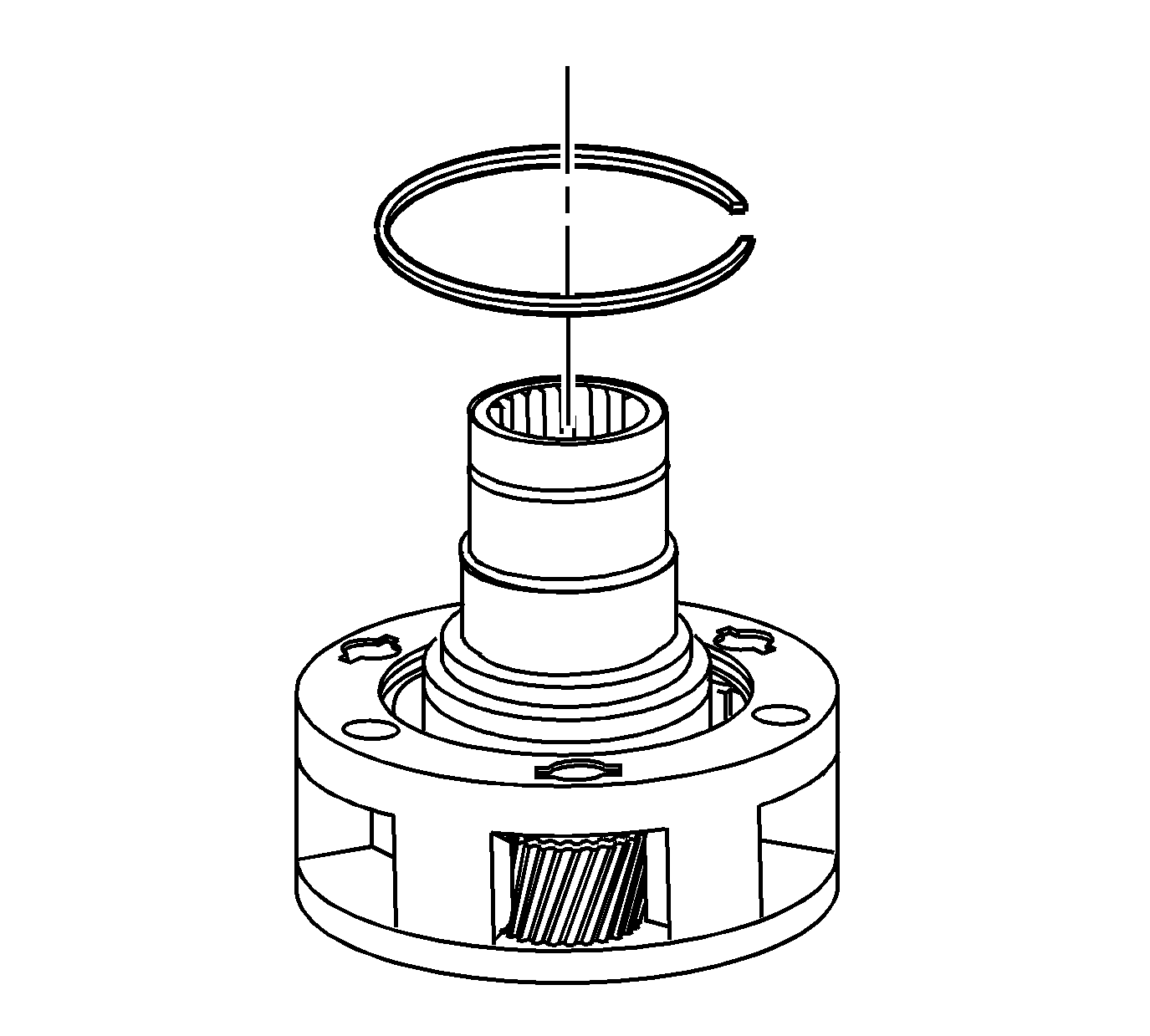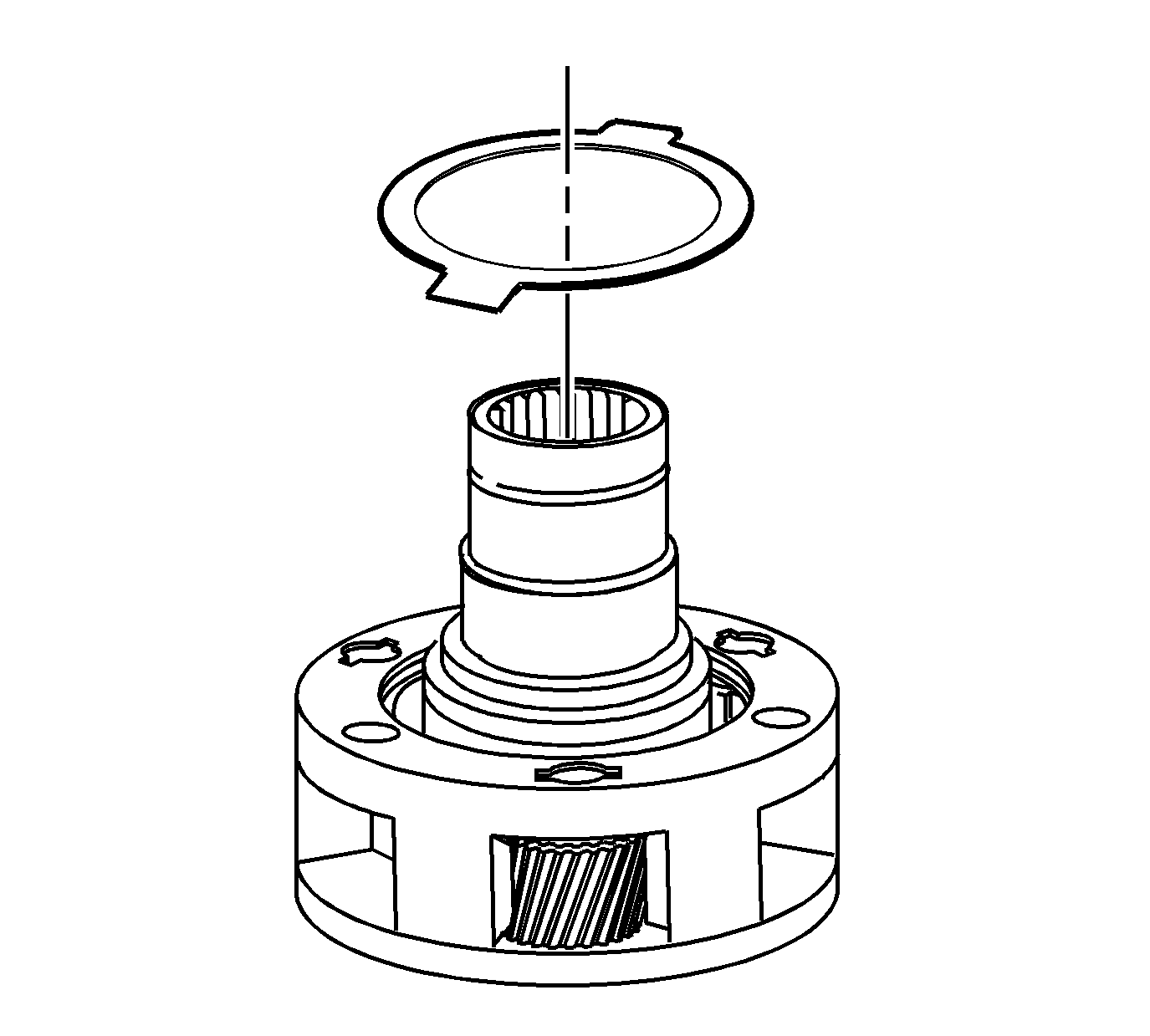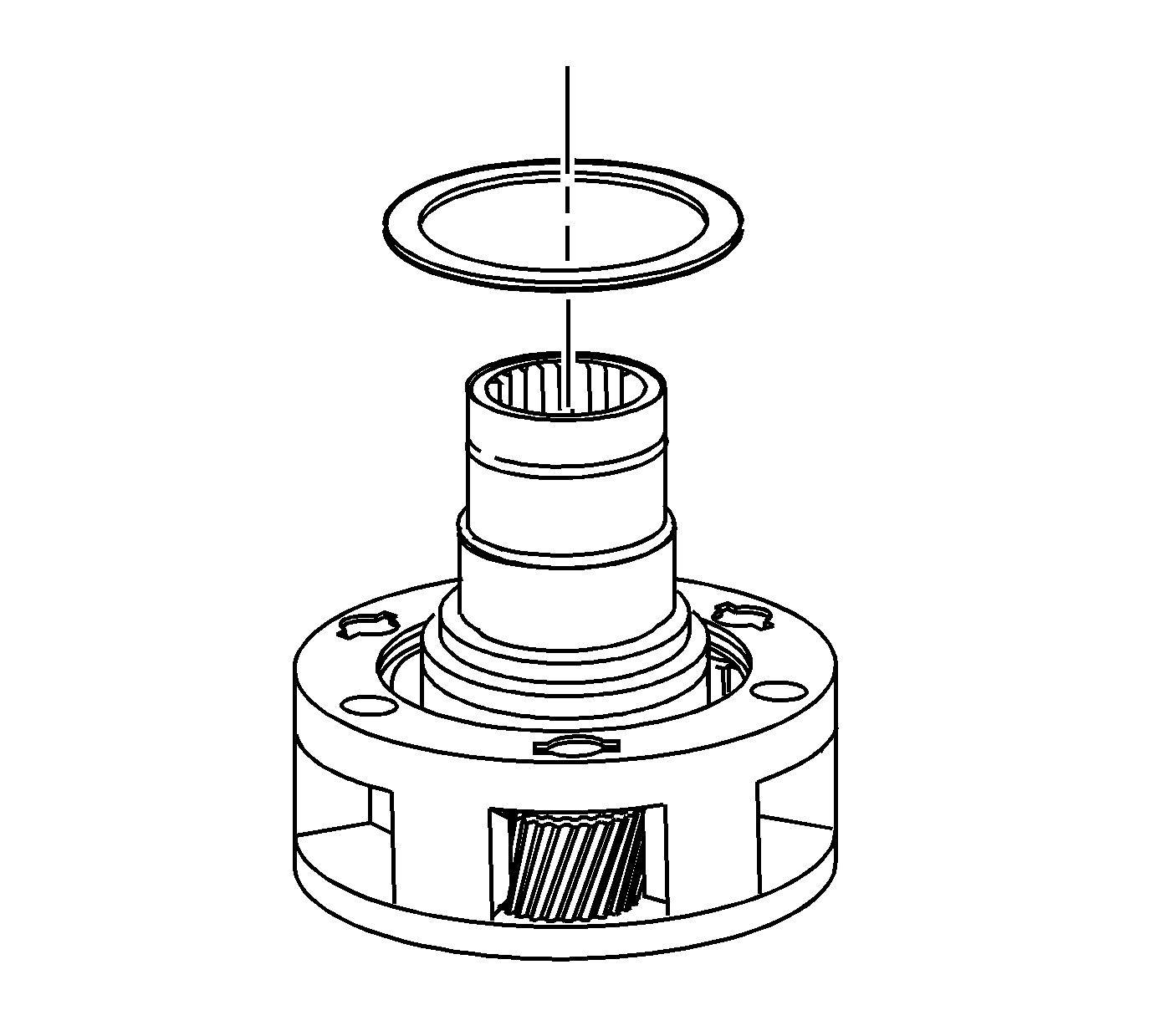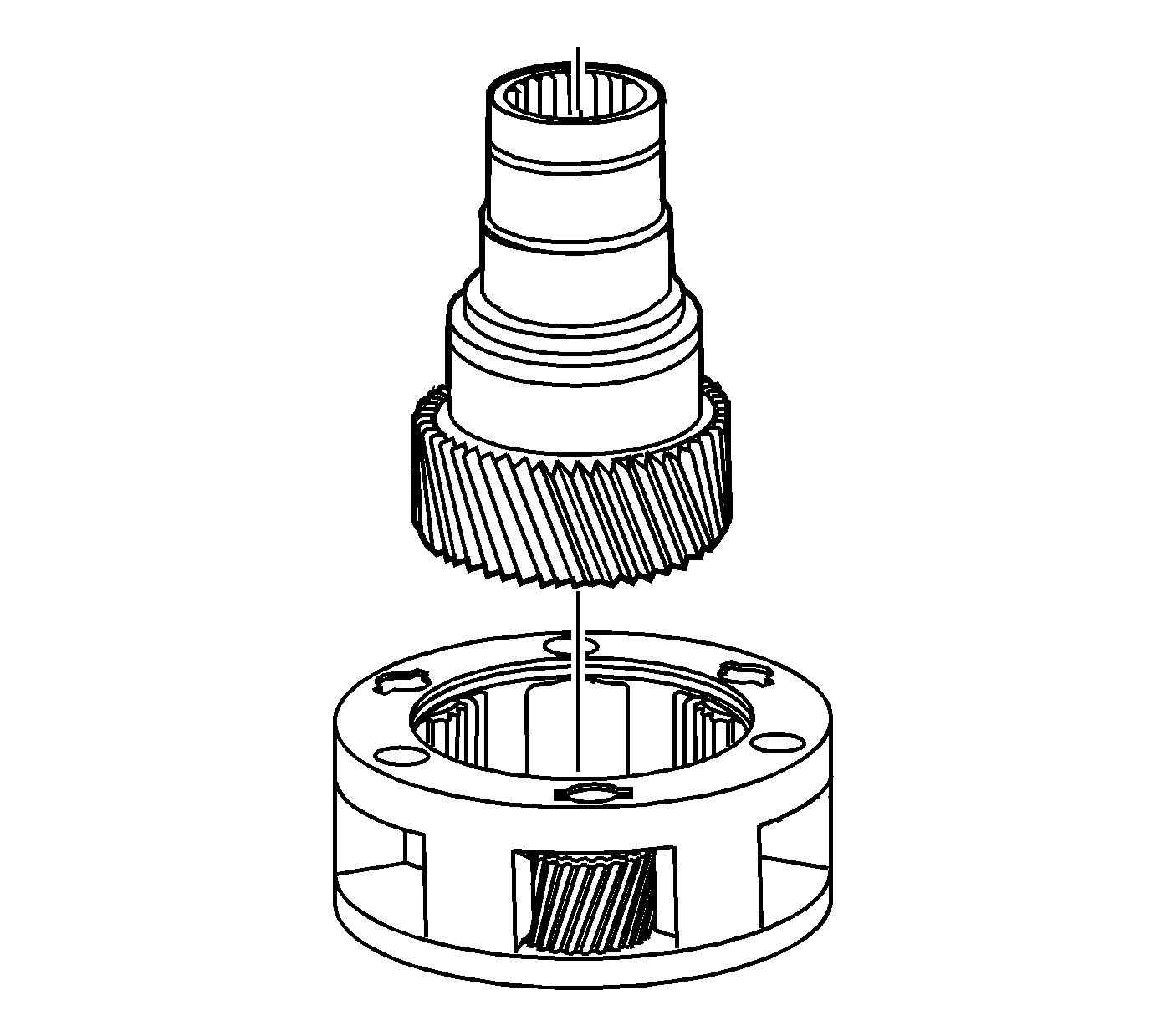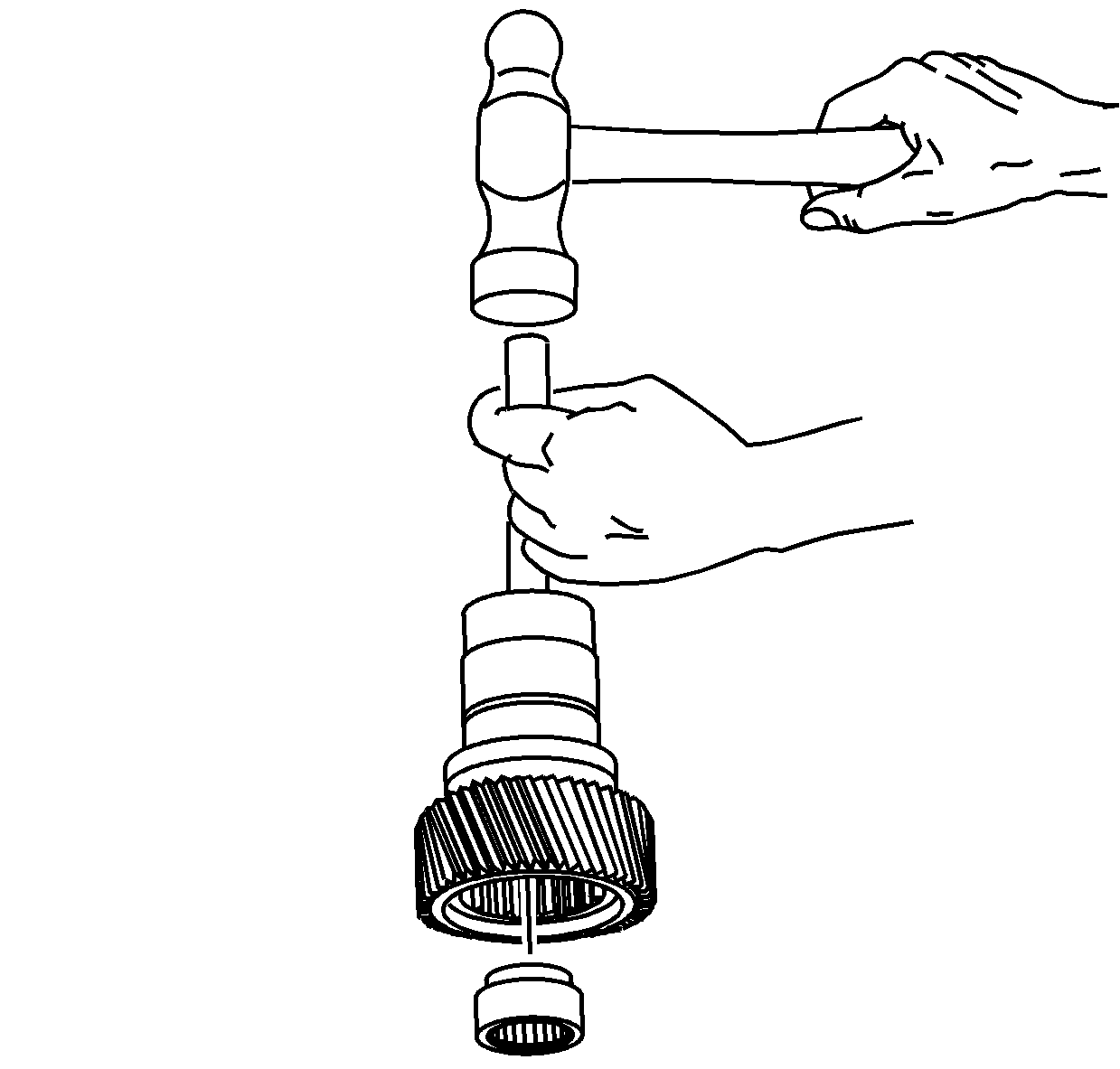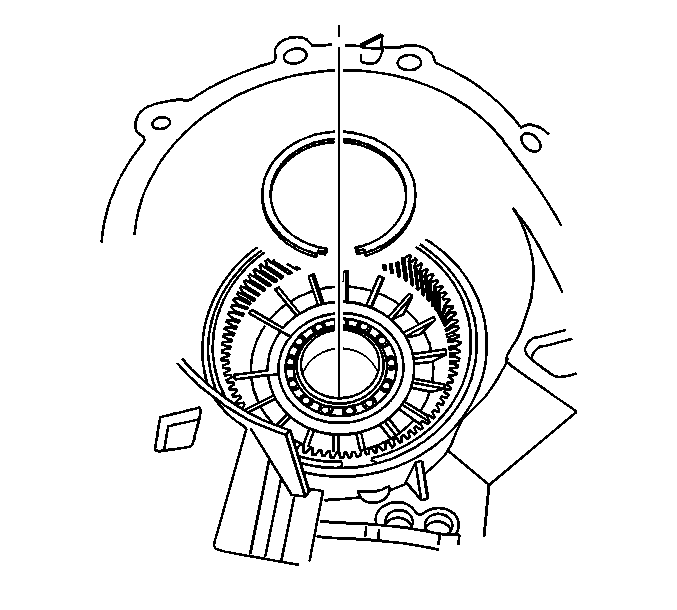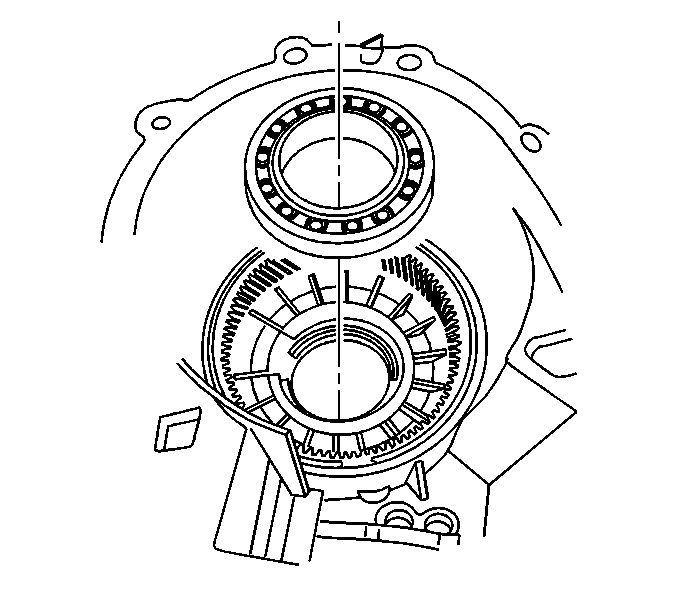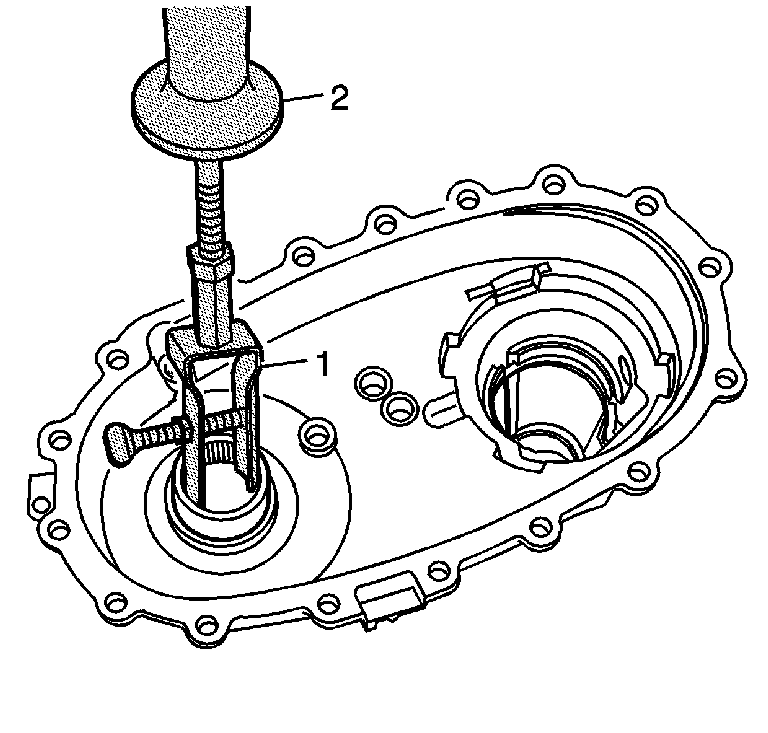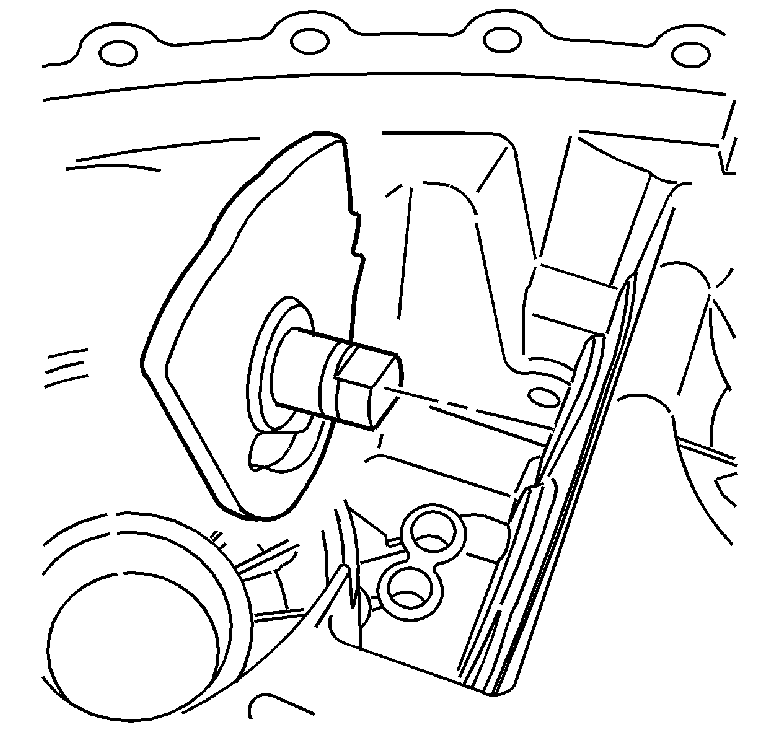Tools Required
| • | J 3289-20 Holding Fixture |
| • | J 23907 Slide Hammer with Bearing Adapter |
| • | J 26941 Bushing and Bearing Remover - 3-4 inch |
| • | J 45380 Transfer Case Rear Bushing Remover and Installer |
| • | J 45759 Assembly Fixture |
- Attach the J 45759 to the transfer case using the adapter studs. All of the transfer case disassembly procedures can be performed with the case mounted to the J 45759 .
- Mount the J 3289-20 (1) to a sturdy workbench.
- Install the J 45759 (2) into J 3289-20 (1) and secure with pivot pin.
- Remove the fill plug (1) and the drain plug (2) and drain the transfer case fluid.
- Remove the actuator encoder motor mounting bolts.
- Remove the actuator encoder motor assembly.
- Remove the actuator insulator gasket.
- Remove the vent and the seal, only if damaged.
- Remove the rear vehicle speed sensors (VSS).
- Remove the front VSS.
- Remove the access hole plug.
- Remove the front output shaft dust seal.
- Remove the front output shaft seal.
- Remove the input shaft seal by prying it out of the front case.
- Remove the rear output shaft seal.
- Inspect the rear output shaft bushing for scoring or wear.
- Remove the rear output shaft bushing using the J 45380 .
- Remove the transfer case retaining bolts and washers.
- Insert a flat-blade screwdriver into the slot on the left side of the transfer case.
- Insert a flat-blade screwdriver into the slot on the right side of the transfer case.
- With equal pressure, press down on the screwdrivers in order to separate the front case half and the rear case half.
- Insert a pair of snap ring pliers and release the outer retaining ring for the rear output shaft bearing.
- Remove the rear case half from the front case half.
- Remove the oil pump wear sleeve, only if it is worn or damaged.
- Remove the rear output shaft rear bearing retaining ring.
- Remove the rear output shaft rear bearing.
- Remove the rear output shaft speed sensor reluctor wheel.
- Remove the magnet.
- If 1st design, disconnect the oil pump suction pipe from the oil pump screen.
- If 1st design, remove the oil pump screen from the front case half.
- If 1st design, remove the oil pump suction pipe from the oil pump inlet hole.
- If 2nd design, remove the oil pump suction pipe assembly. Do not remove the screen from the pipe.
- Remove the oil pump assembly.
- Remove the oil pump suction pipe O-ring from the oil pump.
- Remove the drive sprocket retaining ring.
- Remove the driven sprocket retaining ring.
- Remove the chain and sprockets.
- Remove the chain from the drive sprocket and driven sprocket.
- Remove the rear output shaft assembly.
- Mount the rear output shaft assembly in a soft-jaw vise with the input end up.
- Remove the clutch assembly retaining ring. Push down on the clutch pressure plate to access the retaining ring.
- If 1st design, remove the clutch pressure plate assembly.
- If 1st design, remove the clutch pressure plate spring.
- If 2nd design, remove the clutch pressure plate assembly.
- If 2nd design, remove the clutch pressure plate spring.
- If 1st design, remove the clutch pressure plate bearing, with the clutch bearing inner support, from the clutch pressure plate.
- If necessary, remove the retaining ring from the clutch pressure plate.
- If 2nd design, remove the clutch pressure plate bearing, with the clutch bearing inner support, from the clutch pressure plate.
- Inspect the bearing for being faulty. Refer to Transfer Case Cleaning and Inspection .
- If the bearing is faulty, using a hydraulic press and a suitable adapter, remove the clutch pressure plate bearing from the clutch bearing inner support.
- Discard the bearing after removal.
- Remove the clutch hub retaining ring.
- Remove the clutch housing and hub assembly from the rear output shaft.
- If 1st design, remove the clutch hub oil restrictor plate.
- Turn the clutch assembly over on a workbench.
- If 1st design, remove the clutch housing.
- If 1st design, remove the clutch hub.
- If 1st design, remove the clutch backing plate.
- If 2nd design, remove the clutch hub.
- If 2nd design, remove the clutch housing.
- Separate the clutch plates for inspection.
- Remove and discard the shim or shims.
- Remove the oil restrictor from the rear output shaft, if replacing the shaft.
- Inspect the bearing in the clutch housing for being faulty. Refer to Transfer Case Cleaning and Inspection .
- If the bearing is faulty, use a brass drift and a hammer to remove the bearing.
- Remove both of the clutch lever pivot pins along with the aluminum washers and O-ring seals.
- Remove the shift detent spring bolt.
- Remove the following components:
- Remove the clutch lever assembly.
- Remove the shift fork shaft.
- Remove the range shift fork and the range shift sleeve as an assembly.
- Remove the range shift sleeve from the range shift fork.
- Remove the outer retaining ring for the input gear bearing.
- Remove the high/low planetary carrier.
- Remove the front output shaft bearing retaining ring.
- Remove the front output shaft assembly.
- If damaged, remove the speed sensor reluctor wheel from the front output shaft using a hydraulic press.
- Remove the planetary gear shaft retaining ring.
- Remove the carrier lock plate.
- Remove the input shaft thrust washer.
- Remove the input gear from the planetary carrier.
- Remove the thrust washer.
- Inspect the pilot bearing in the input gear for being faulty. Refer to Transfer Case Cleaning and Inspection .
- Remove the pilot bearing from the input gear using a brass drift and a hammer.
- Remove the input bearing retaining ring.
- Remove the input bearing.
- Remove the front output shaft front bearing retainer ring.
- Remove the front output shaft front bearing.
- Inspect the front output shaft rear bearing for being faulty. Refer to Transfer Case Cleaning and Inspection .
- If the bearing is faulty, remove the bearing using the J 23907 (2) and the J 26941 (1).
- Remove the retaining ring for the control actuator lever shaft.
- Remove the control actuator lever shaft.
- Inspect the control actuator lever bearing and seal for being faulty. Refer to Transfer Case Cleaning and Inspection .
- If the bearing is leaking or faulty, remove the bearing from the case.
- Remove the mounting studs, only if they are damaged.
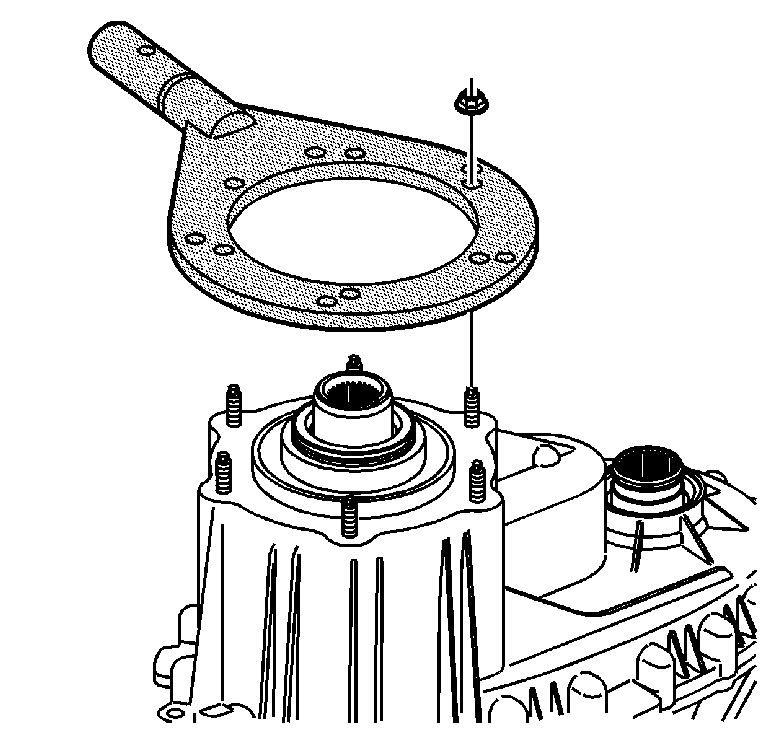
Important: Because of manufacturing design changes, the transfer case was manufactured with either 1st design clutch components or 2nd design clutch components. The oil pump pick-up screen parts may also be a 1st design or 2nd design. When the different design components affect disassemble procedures, follow the procedures for that design level. The changes are for manufacture purposes only and do not enhance the performance of the transfer case.


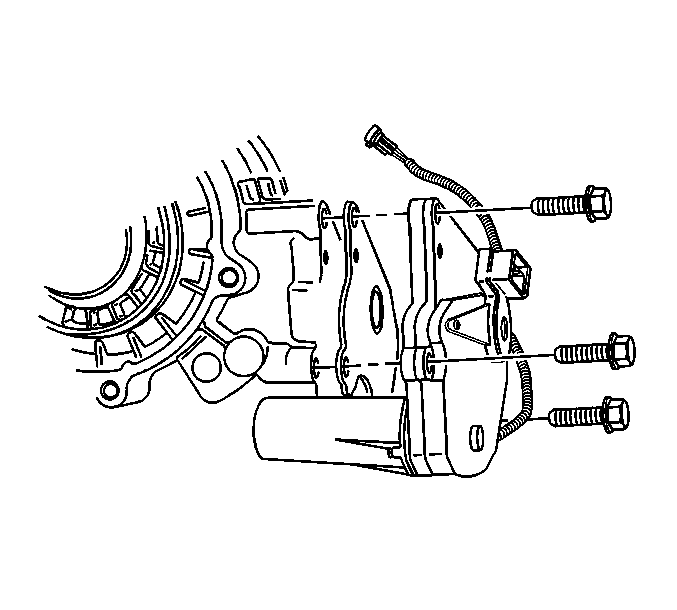
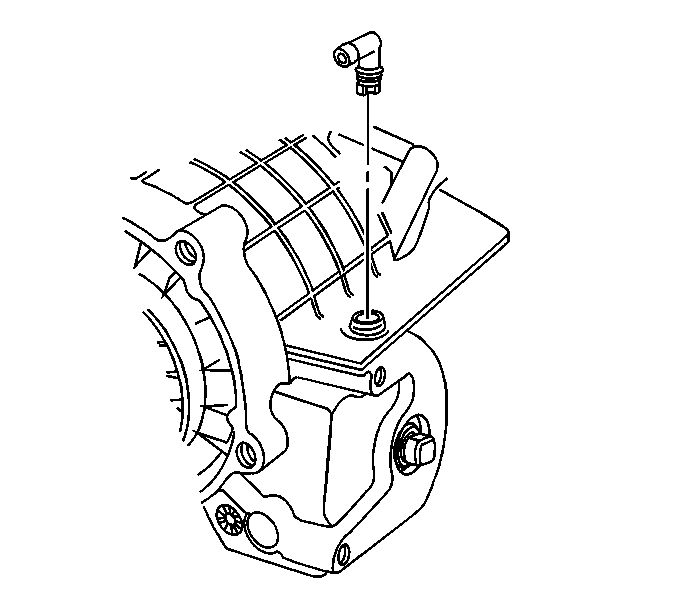
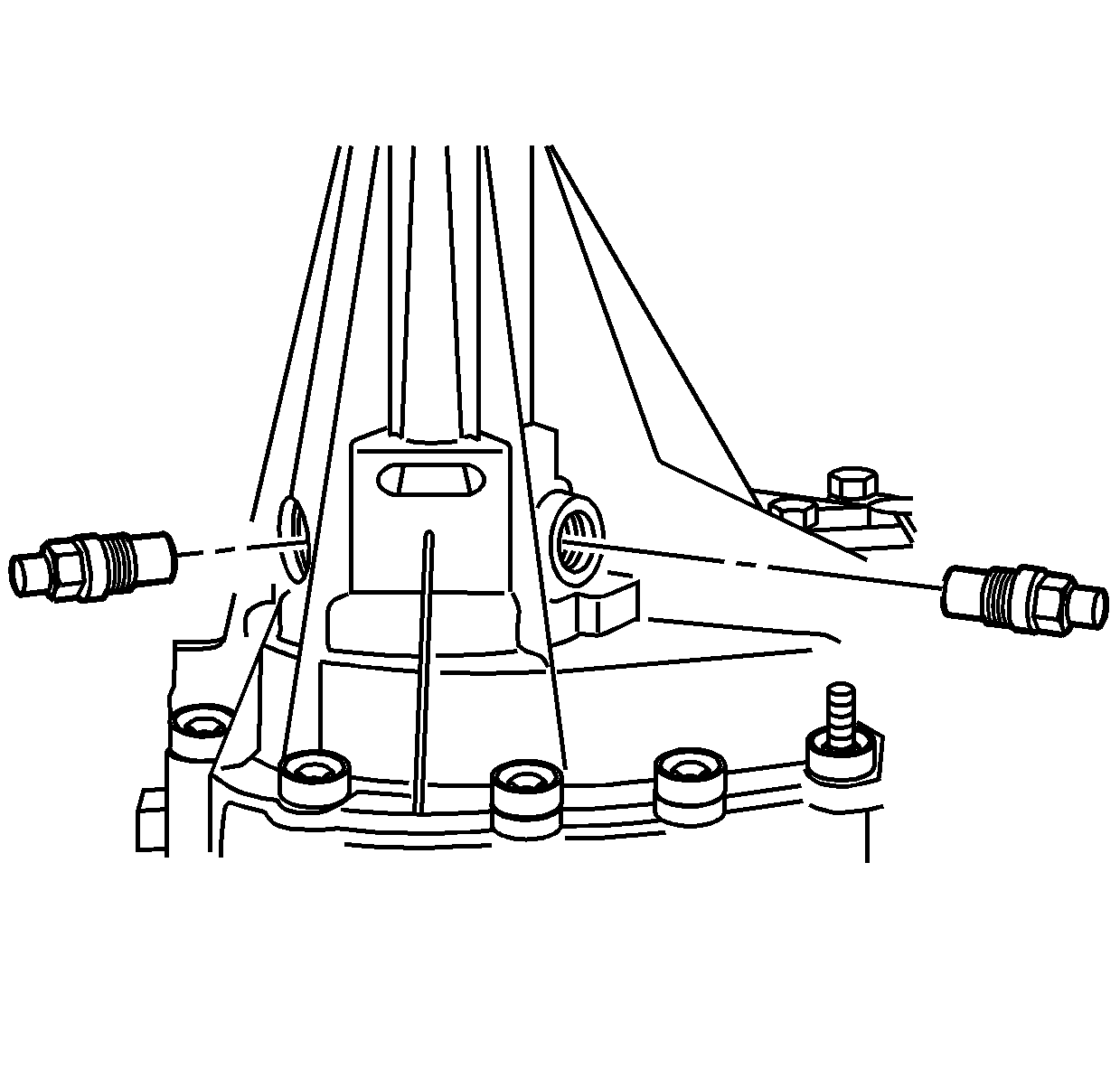
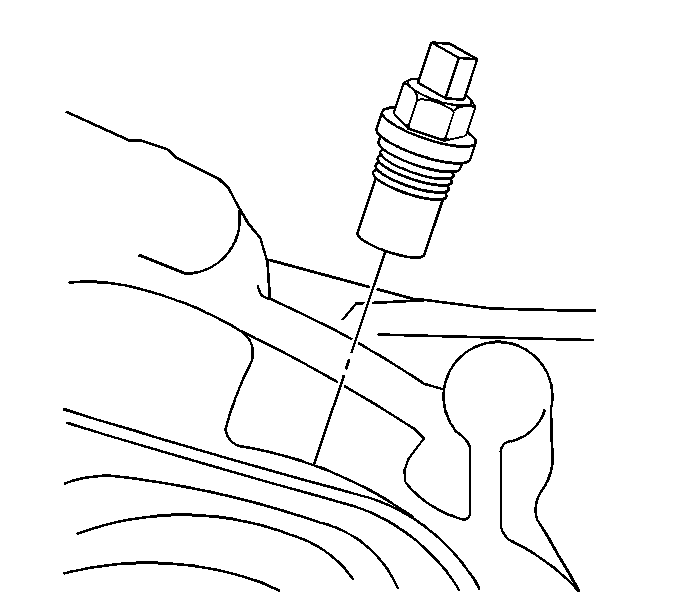
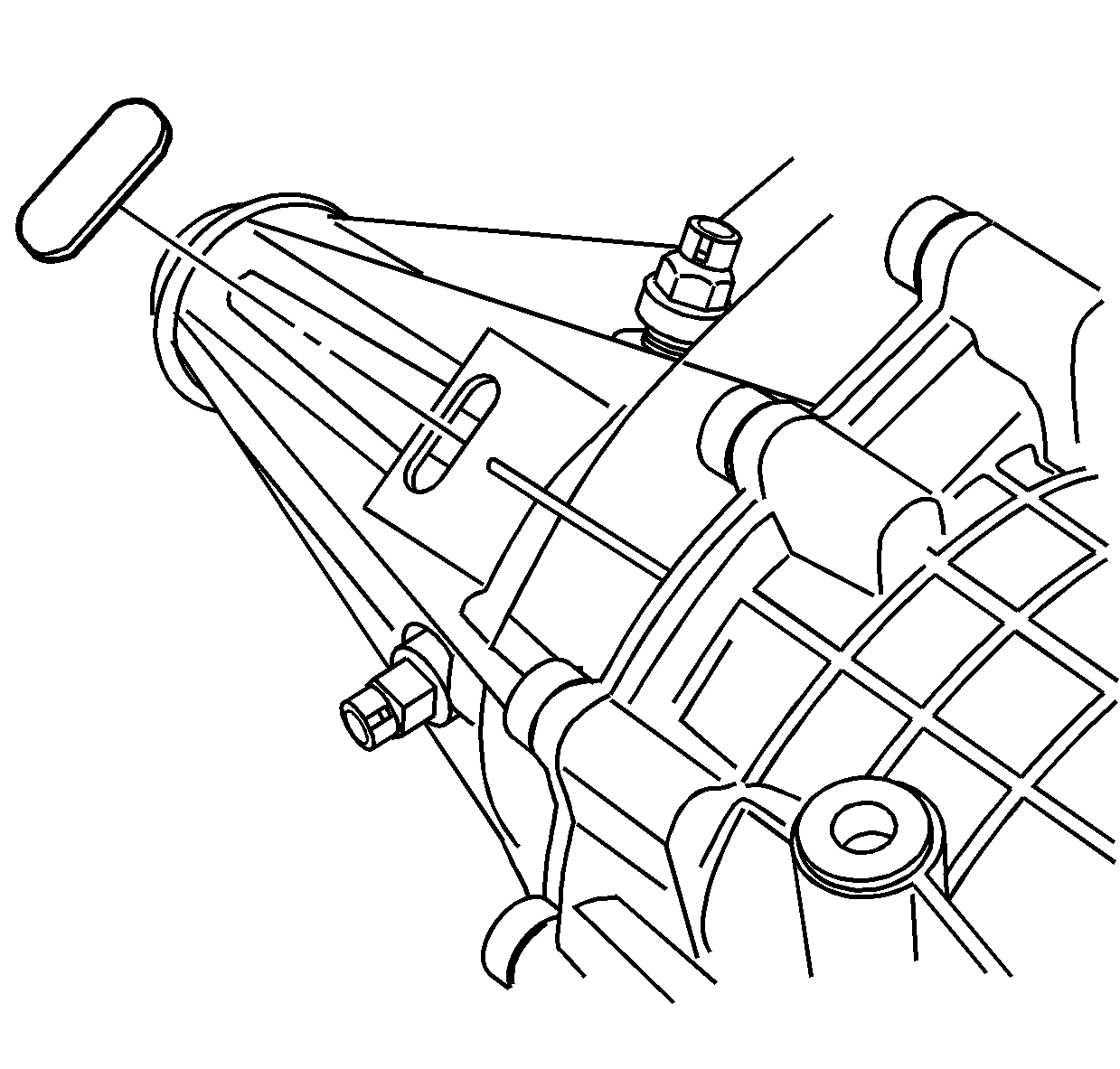
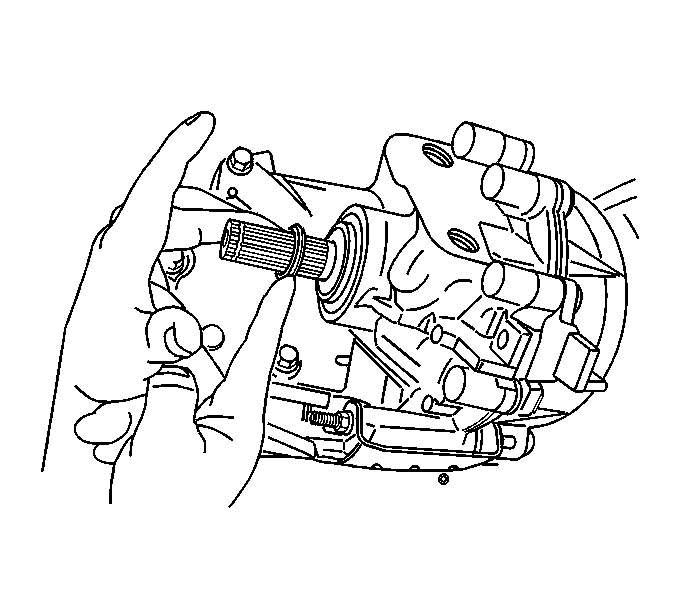
Notice: Refer to Transfer Case Seal Removal Notice in the Preface section.
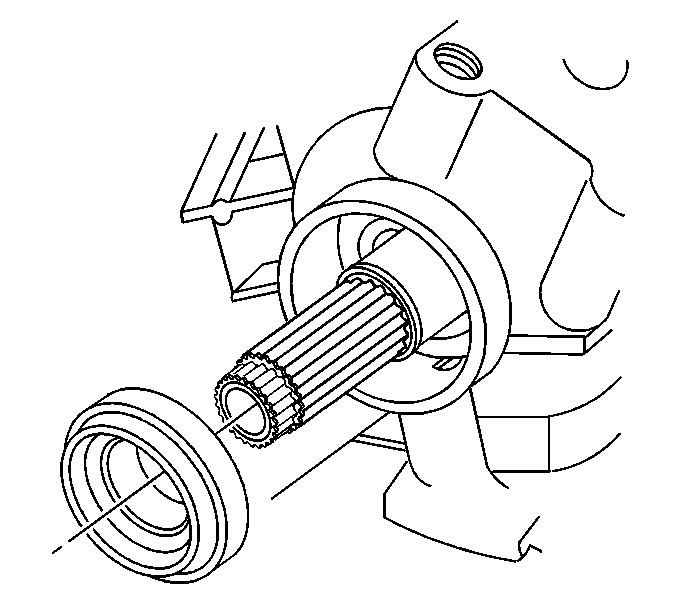
Notice: Refer to Transfer Case Seal Removal Notice in the Preface section.

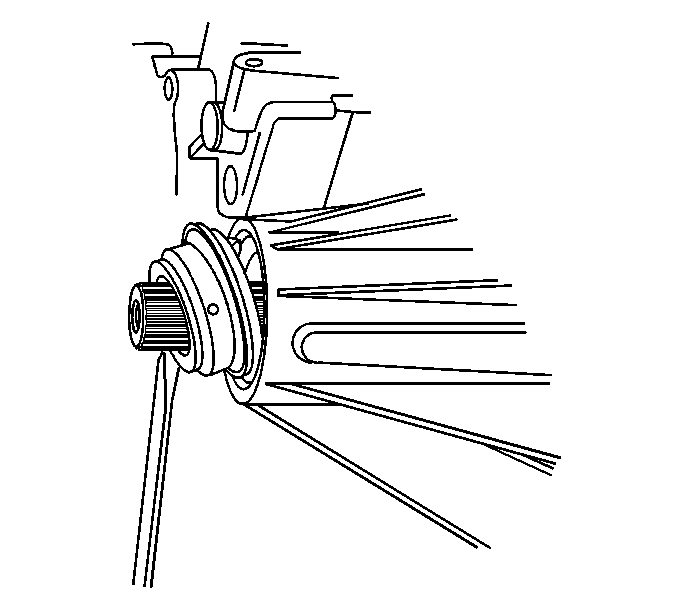
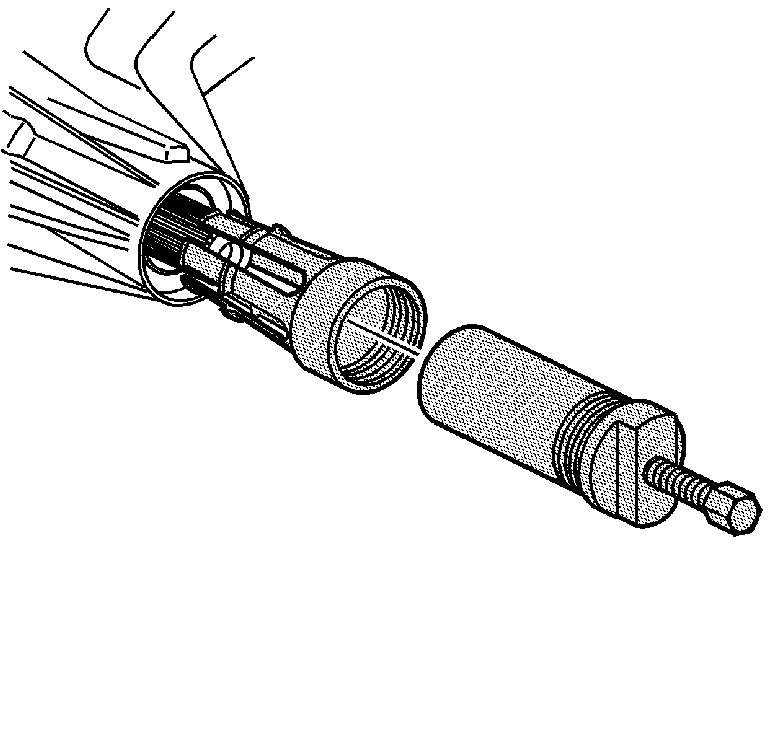
| 17.1. | Install the finger section of the J 45380 in front of the bushing. |
| 17.2. | Install the tube and forcing screw assembly to the finger section. Ensure the forcing screw is backed out. |
| 17.3. | Using a wrench on the forcing screw, remove the rear output shaft bushing. |

Important: The magnesium transfer cases are using new style bolts that have a cup style washer. The cup washer is only available with the bolt. If the cup washer is not damaged, the bolt can be used again.
Mark the location of any brackets.
Notice: Refer to Machined Surface Damage Notice in the Preface section.
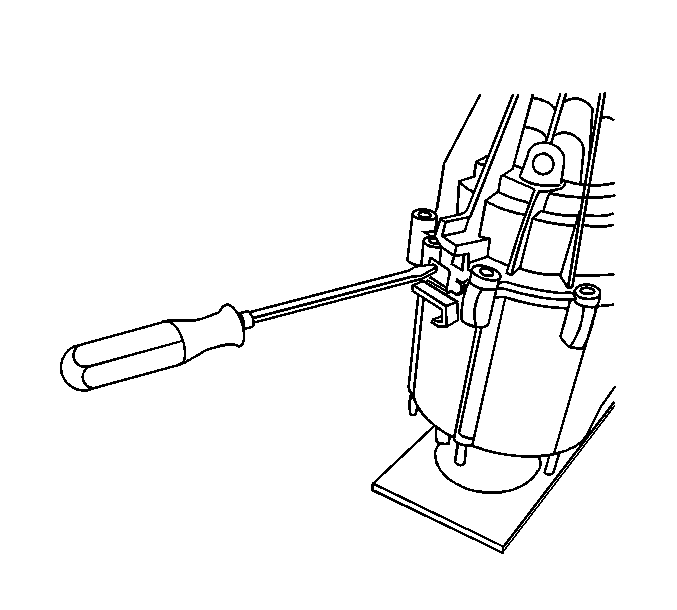

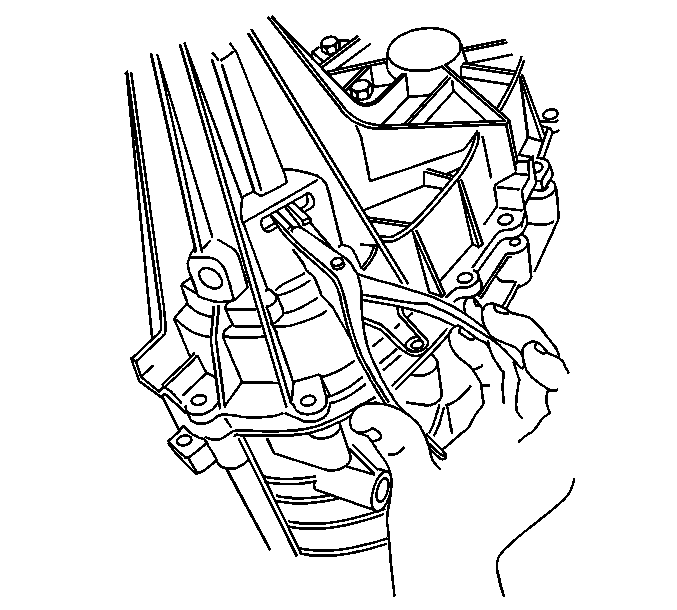
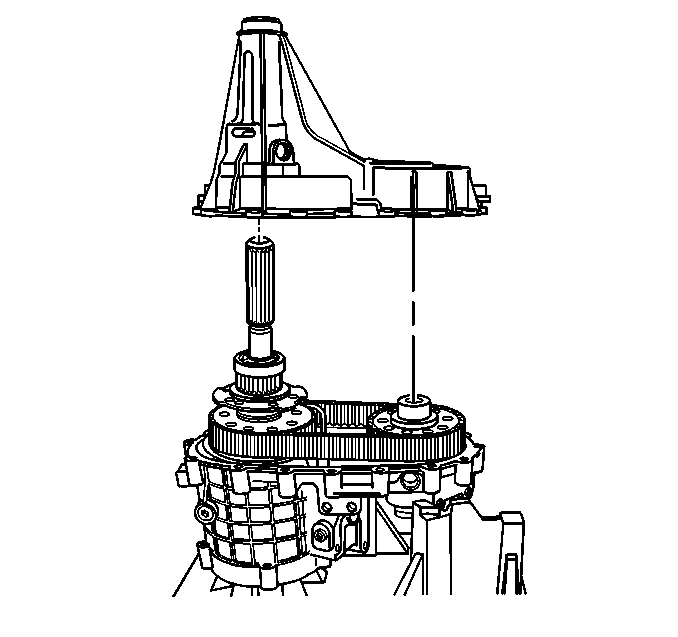
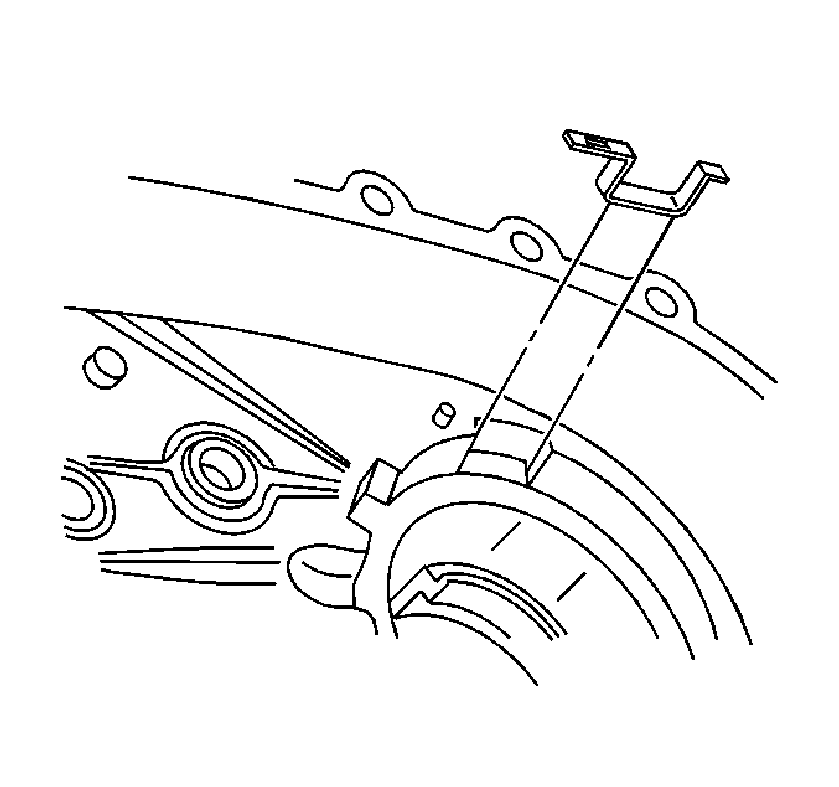
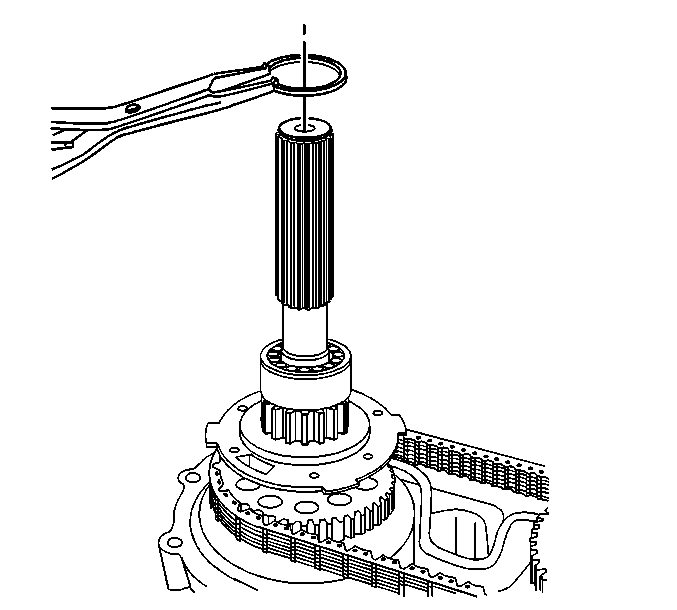
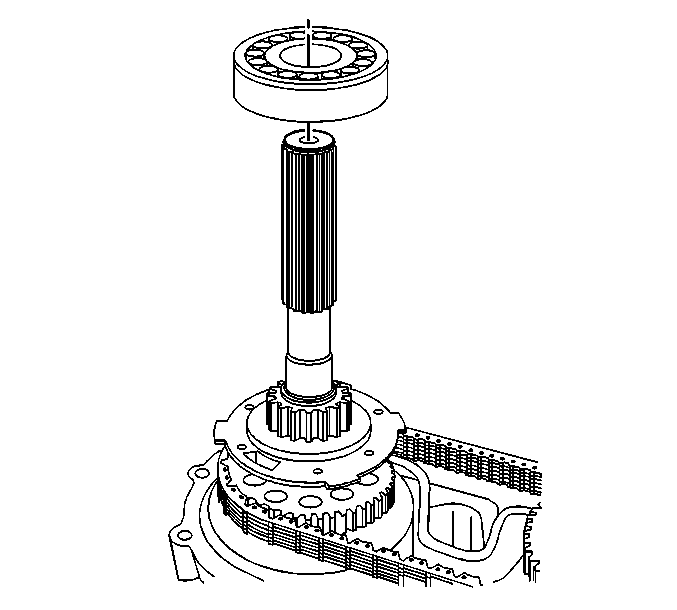
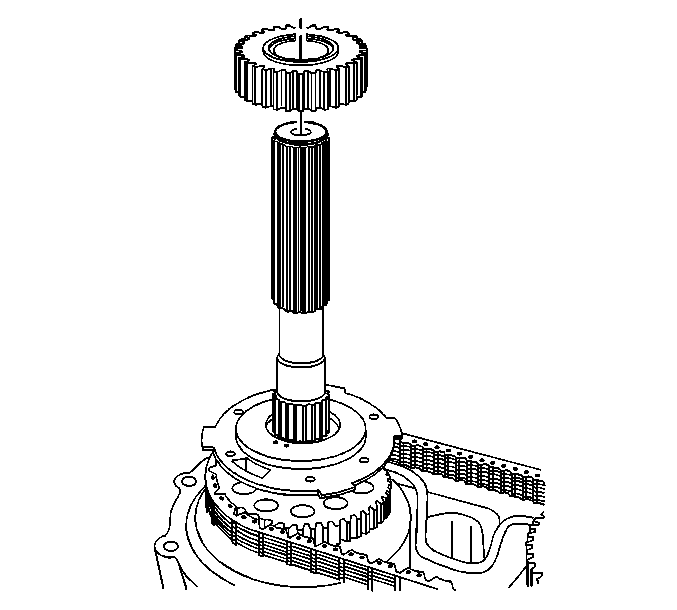
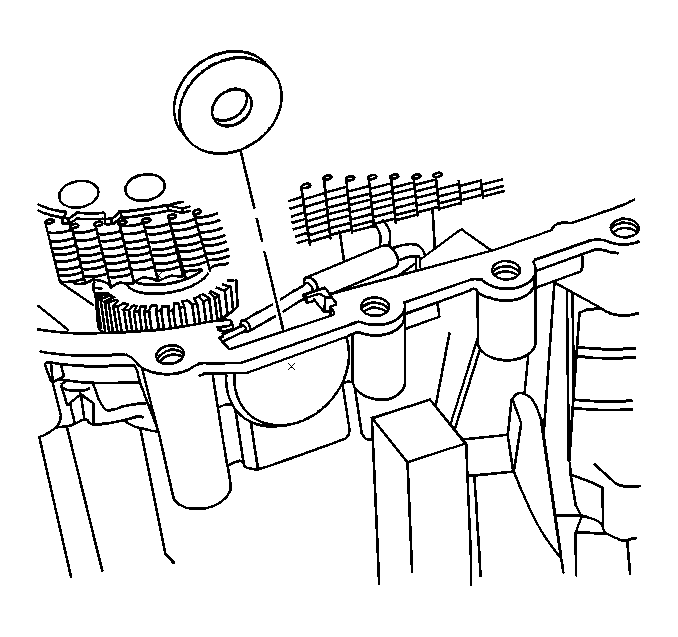
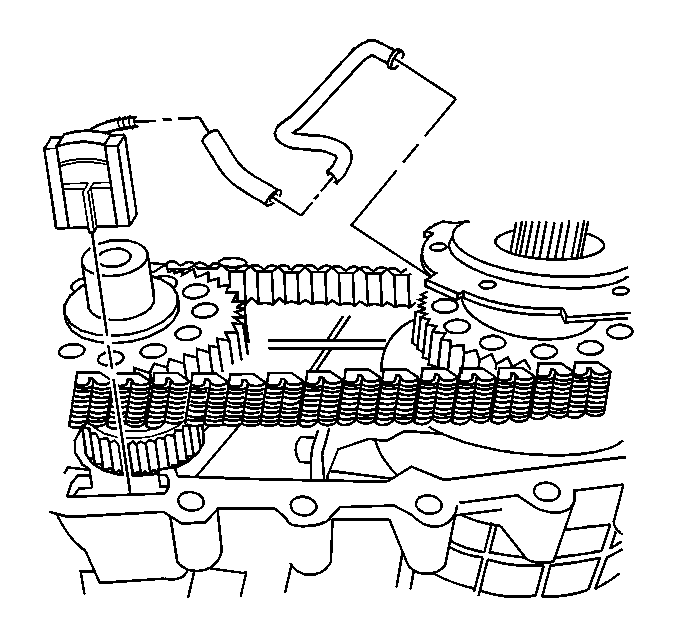
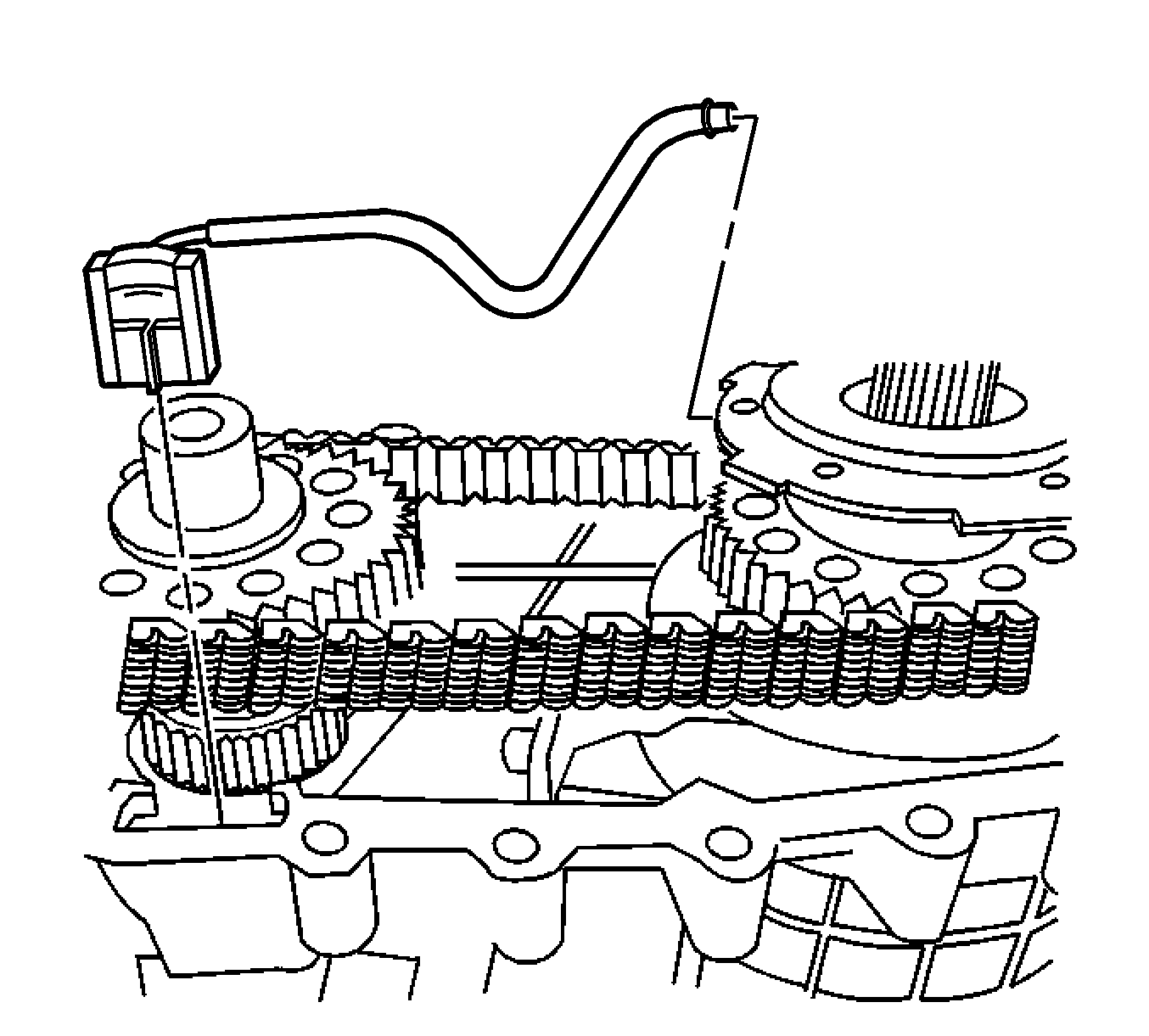
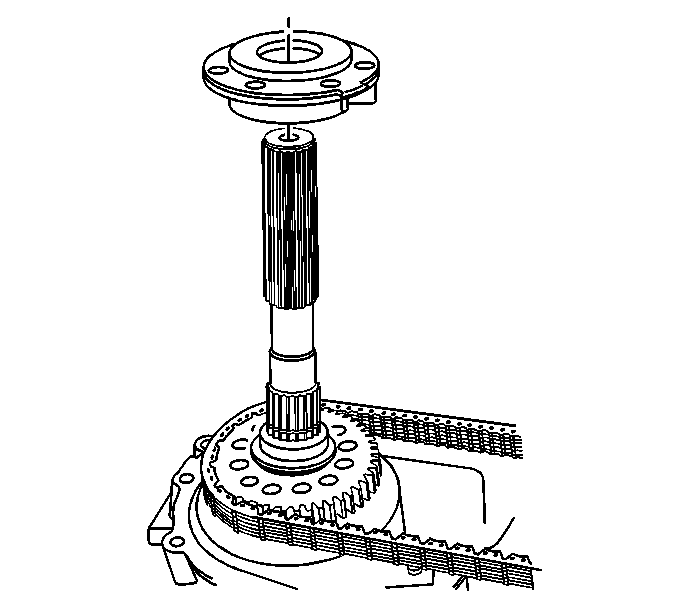
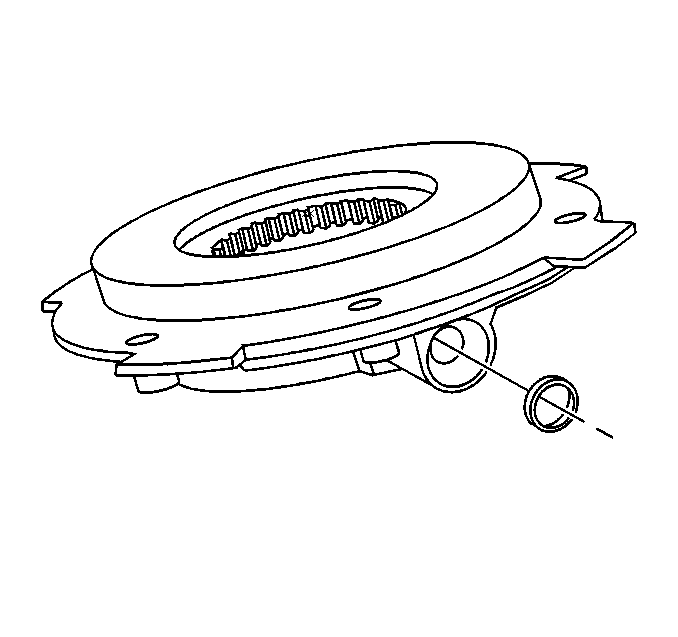
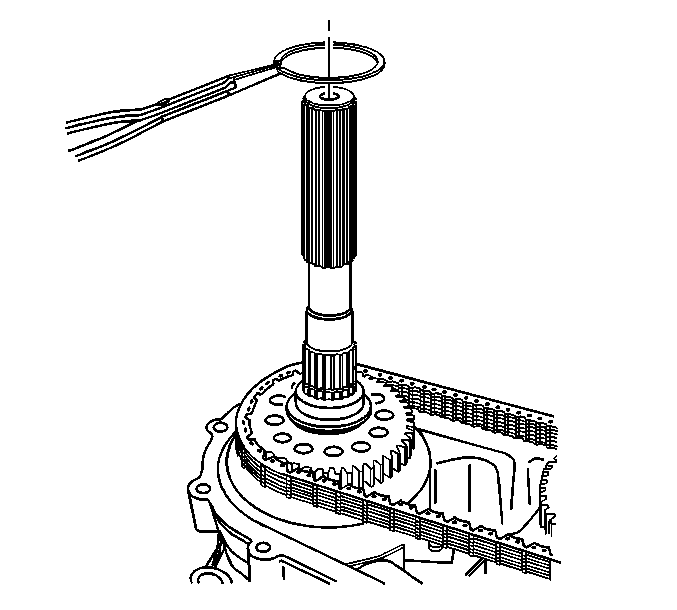
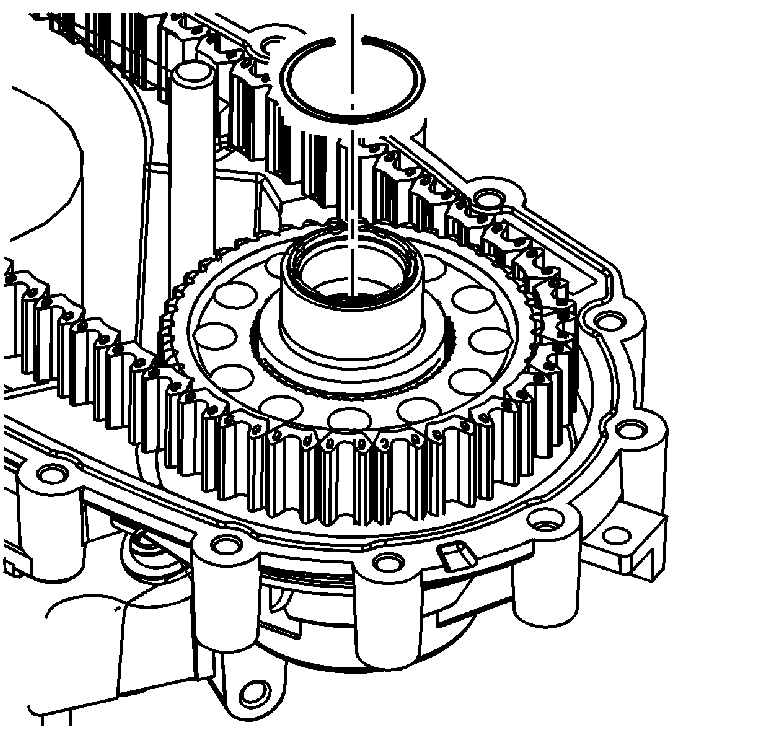
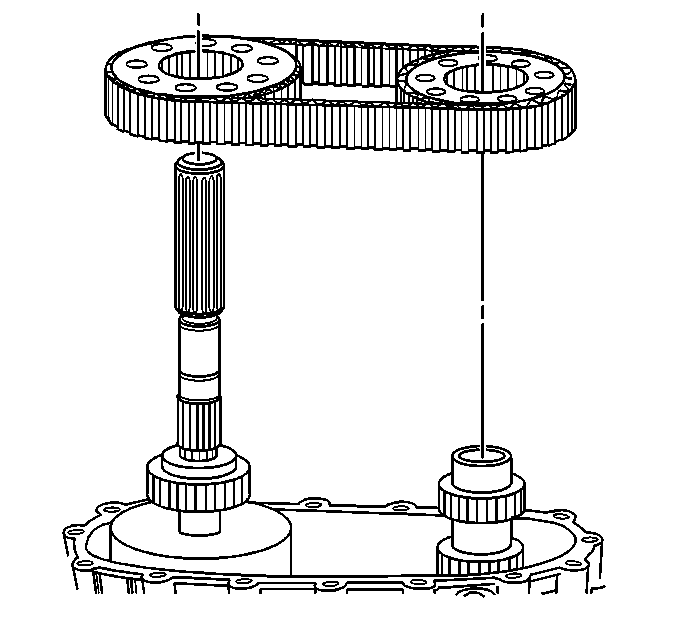
Important: If the chain and sprockets are to be used again, mark the relationship of the chain to the sprockets in order to mark the wear patterns.
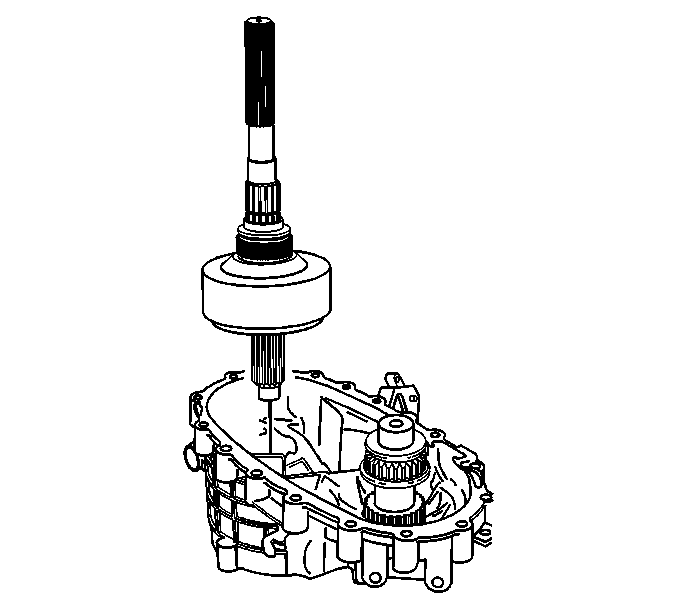

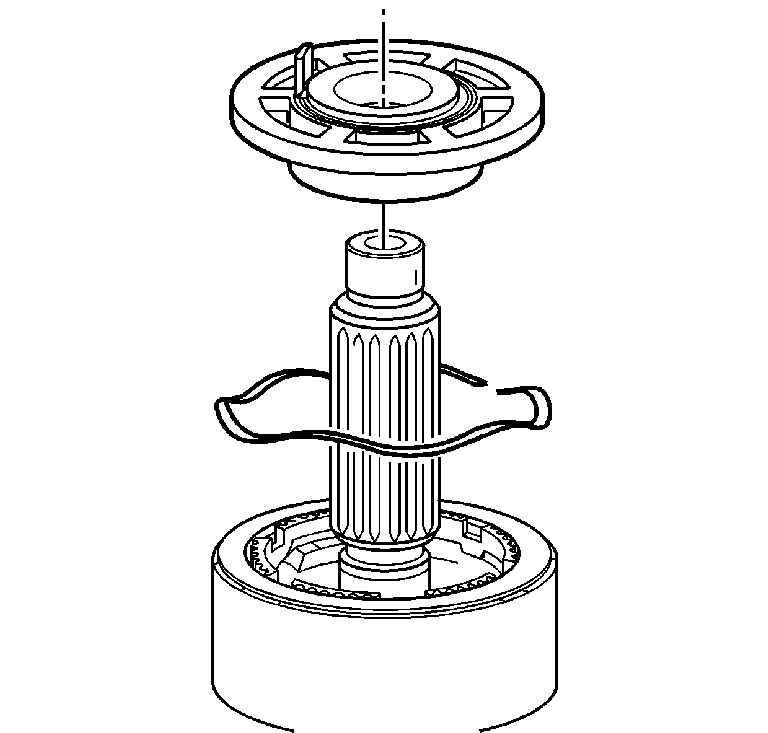

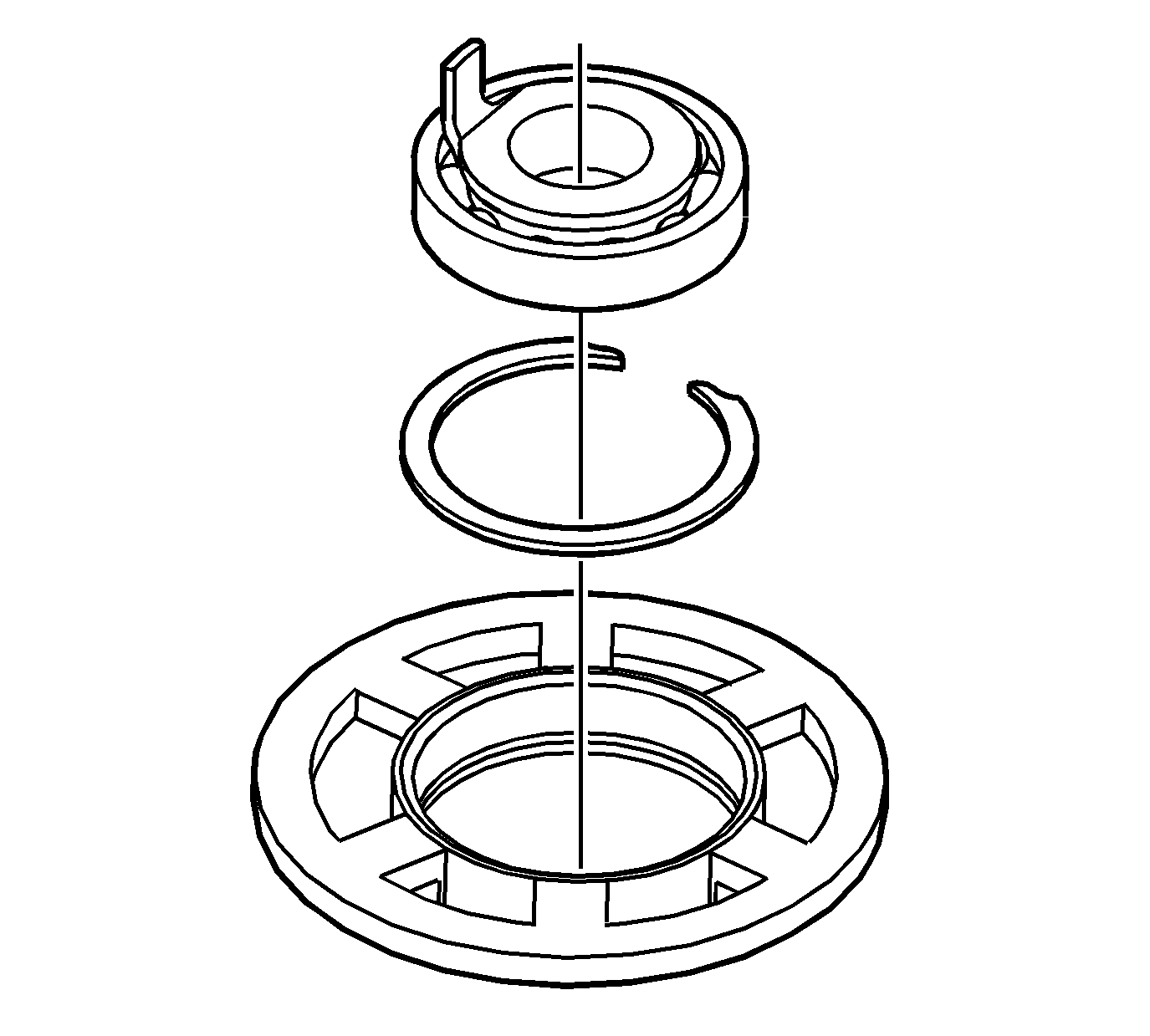
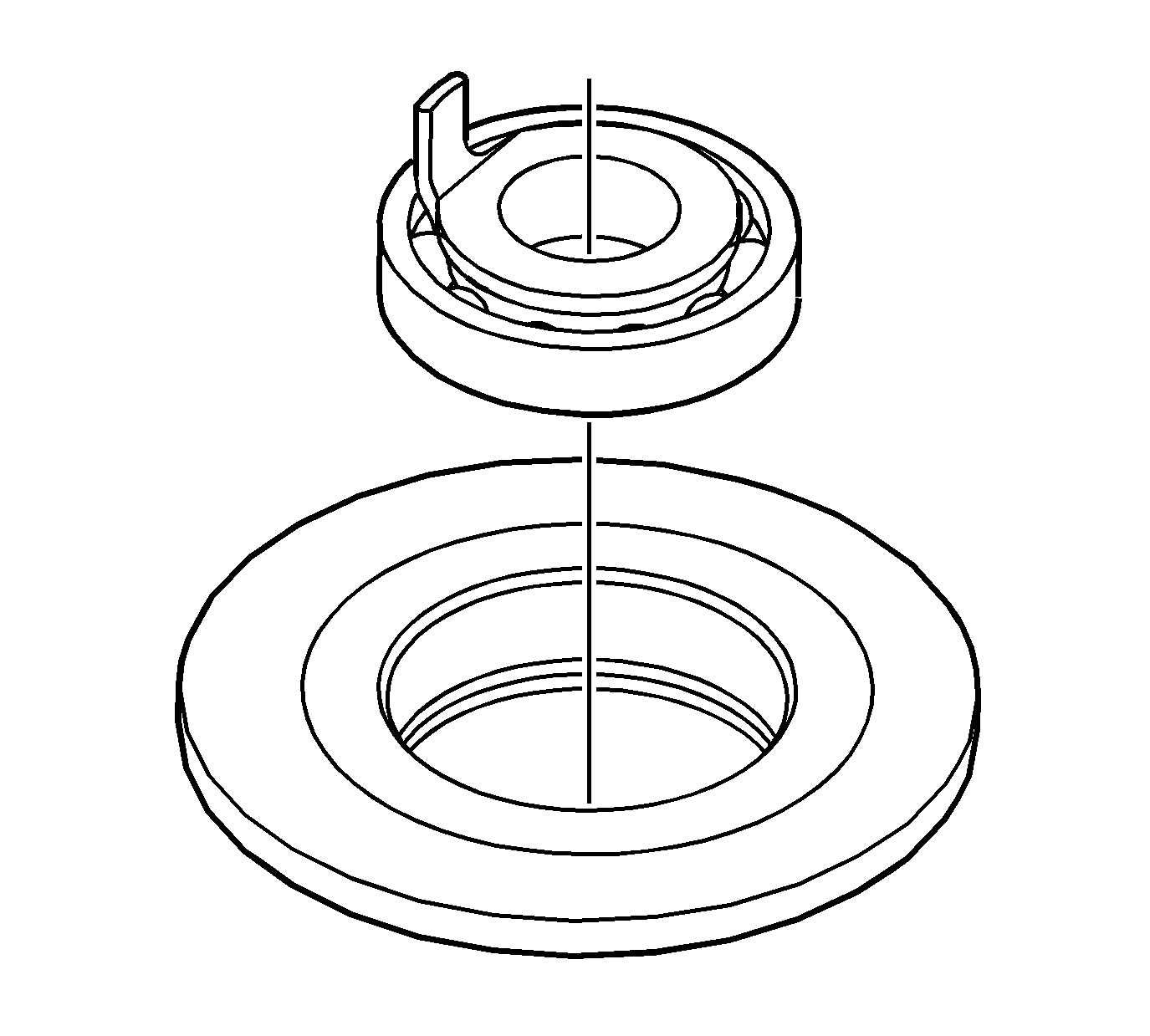
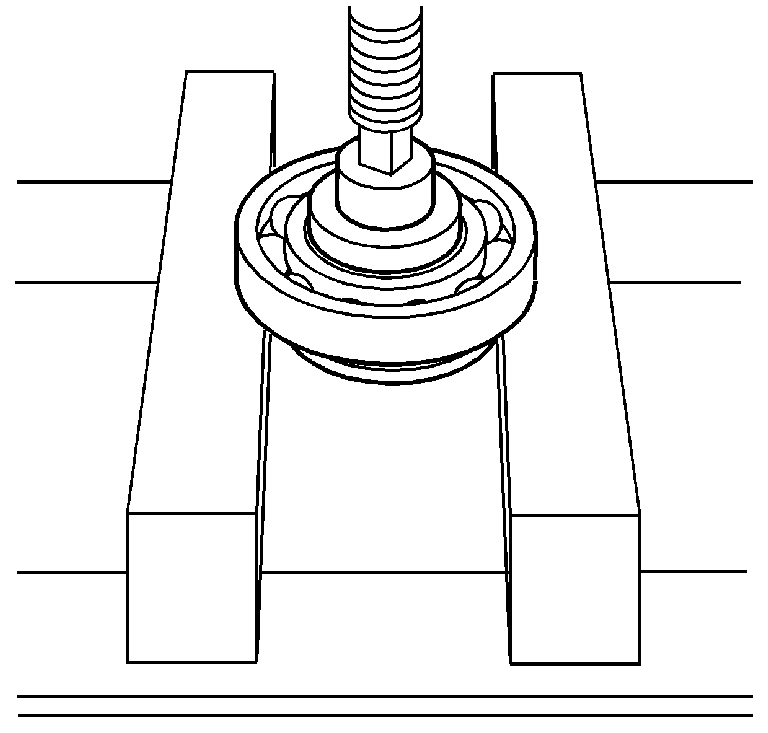
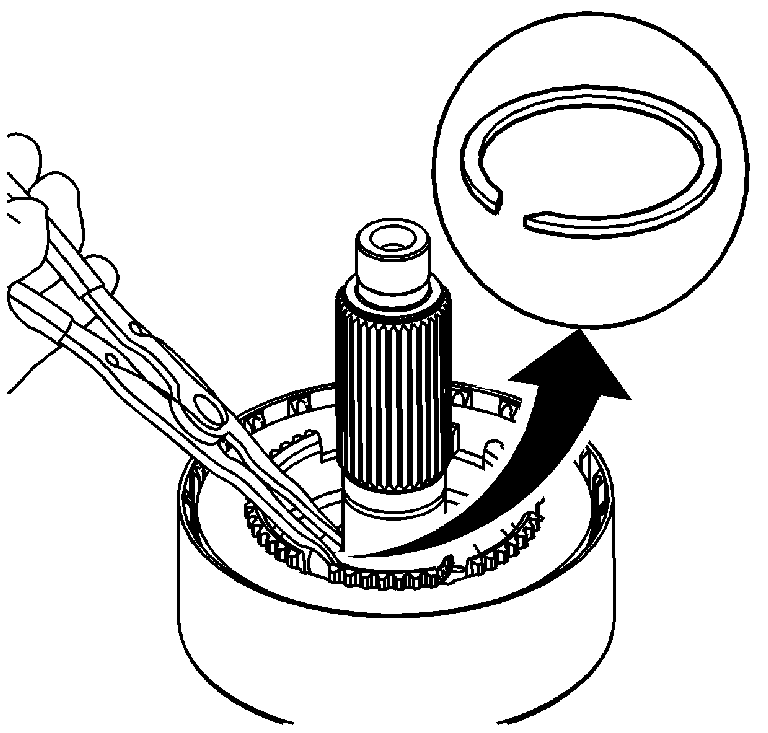
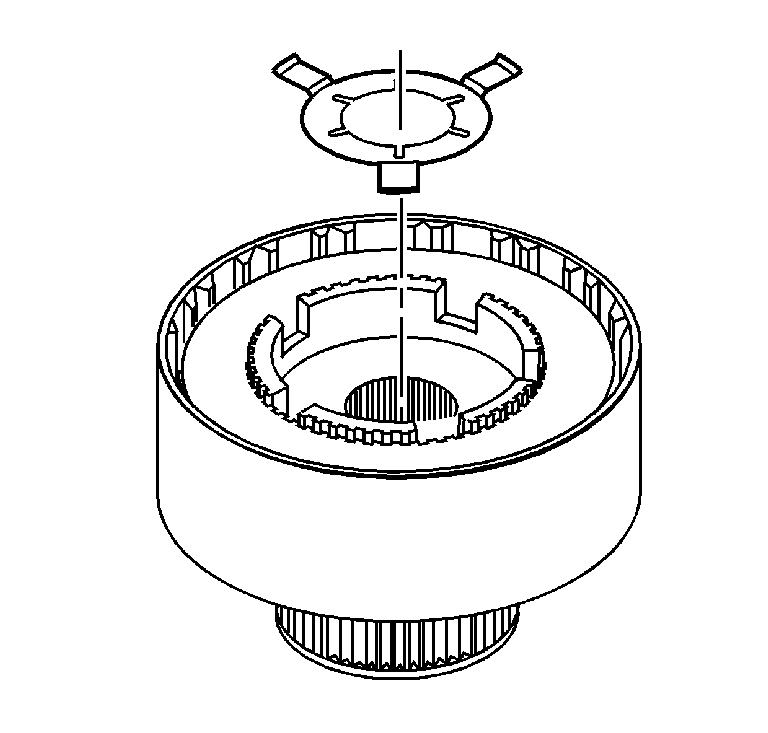
Important: Do not remove the oil restrictor plate on the 2nd design clutch hub. The oil restrictor plate is only serviced with the clutch hub.


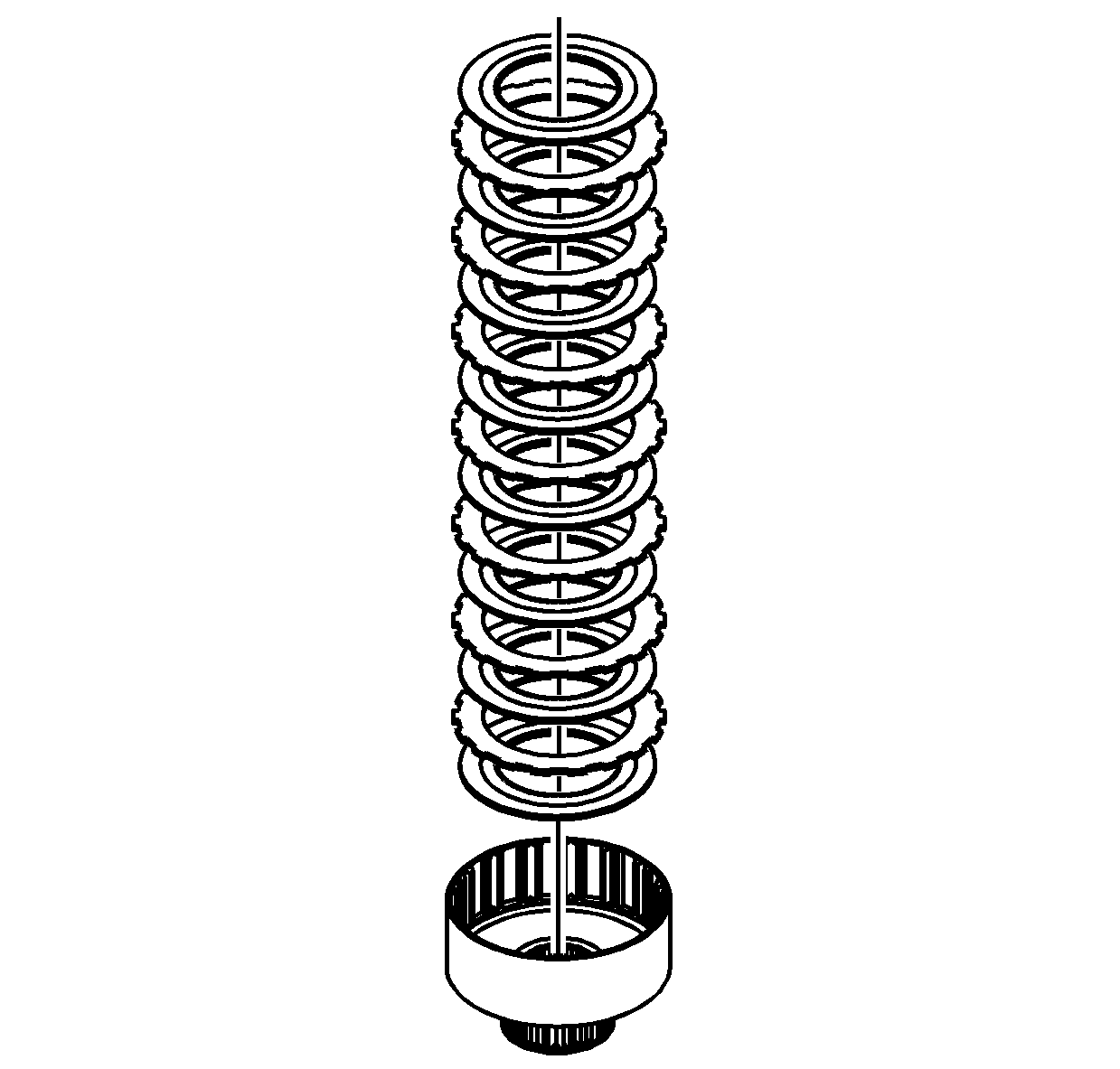
Important: Do not wash the clutch inner friction plates in cleaning solvent.
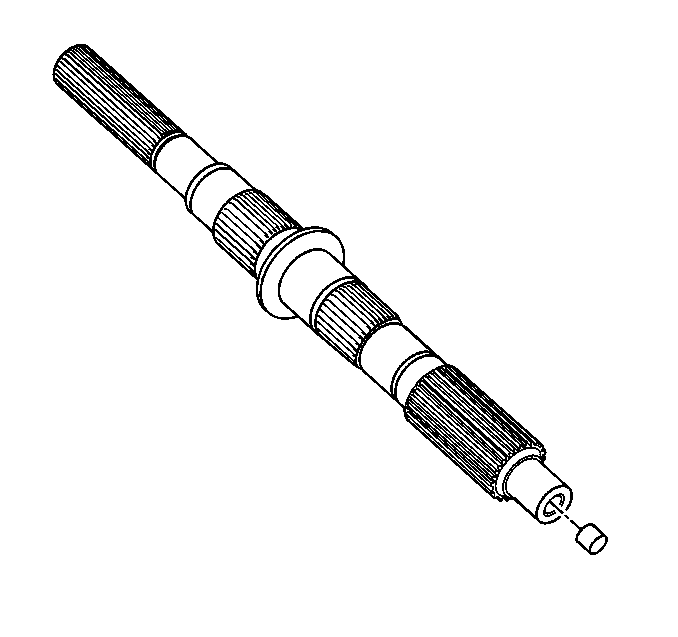
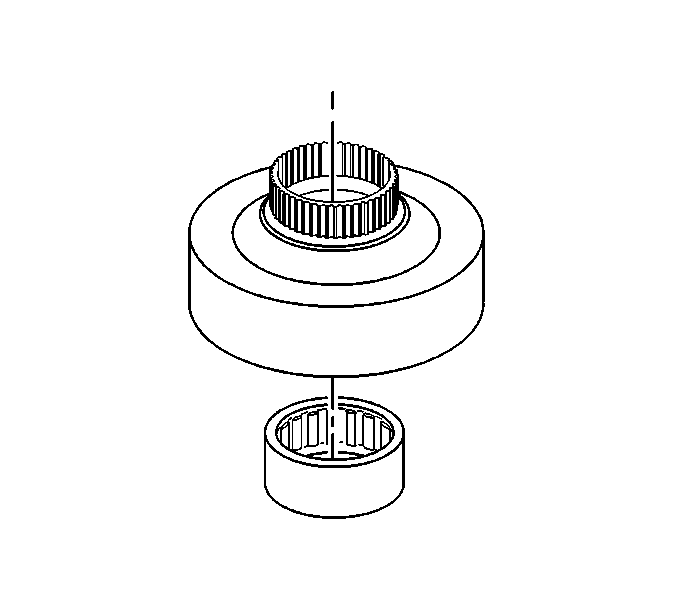
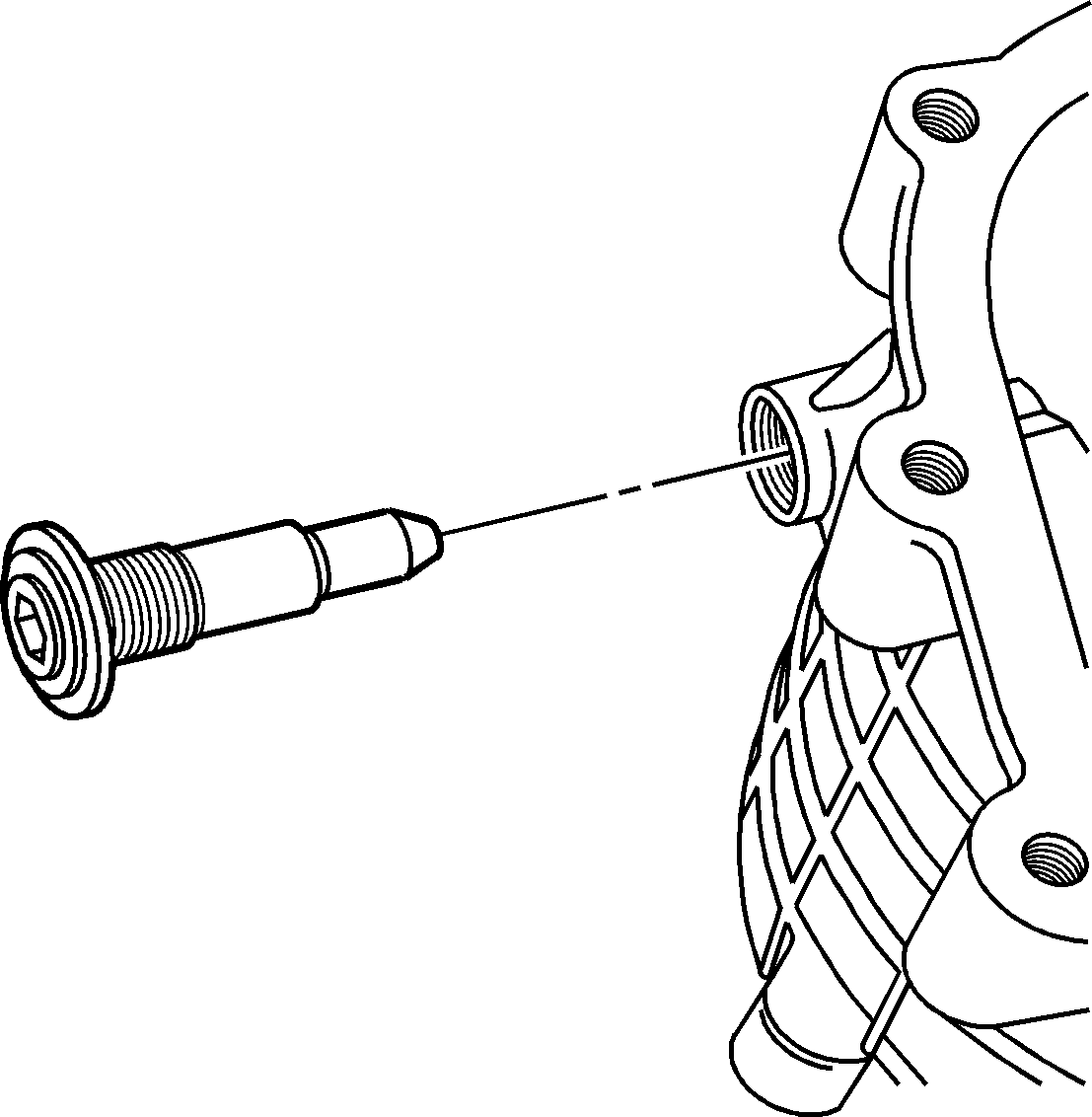
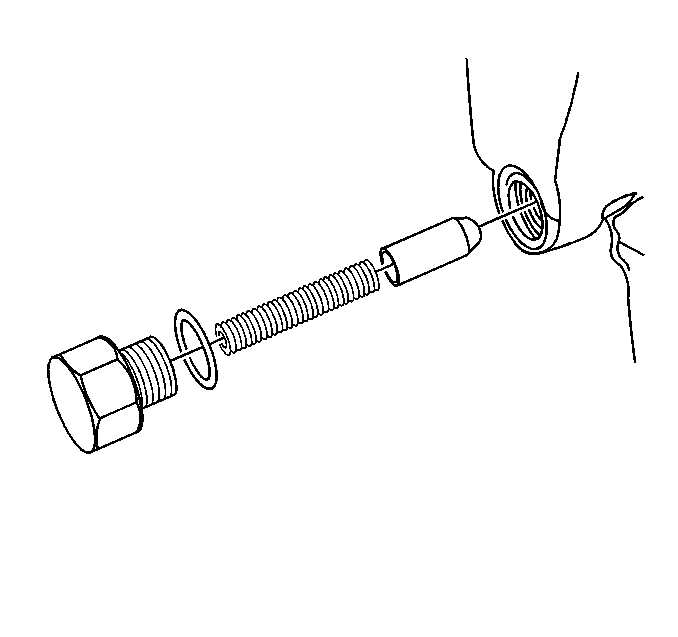
| • | The shift detent plunger plug O-ring seal |
| • | The shift detent spring |
| • | The shift detent plunger |
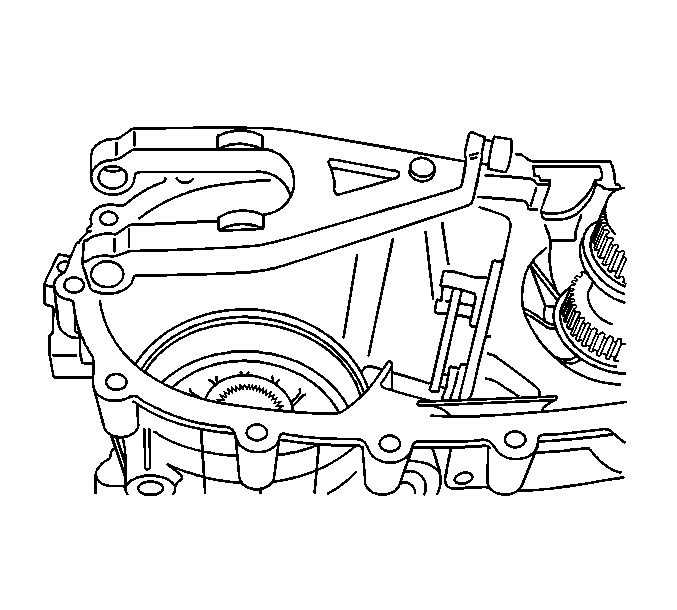
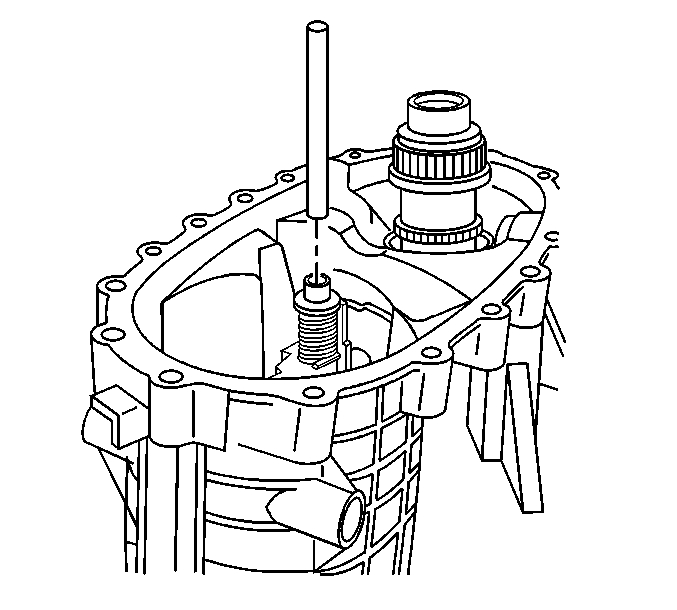
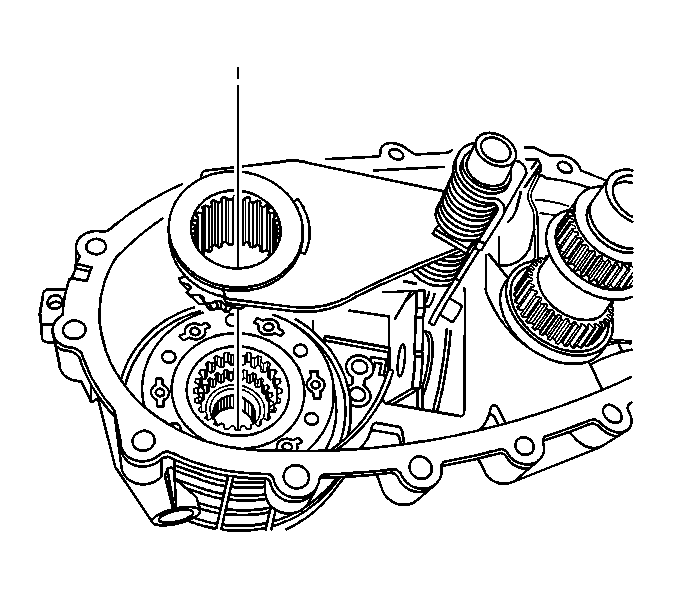
It may be necessary to pry the roller on the shift fork from the control actuator lever.

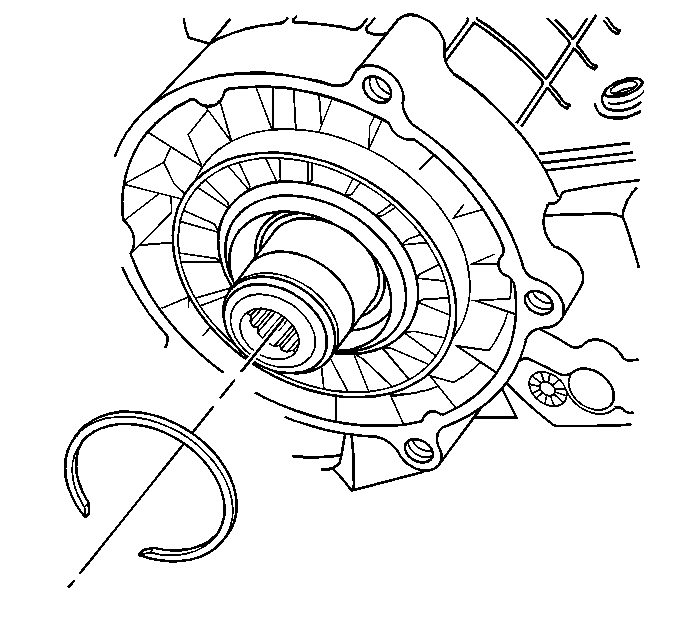
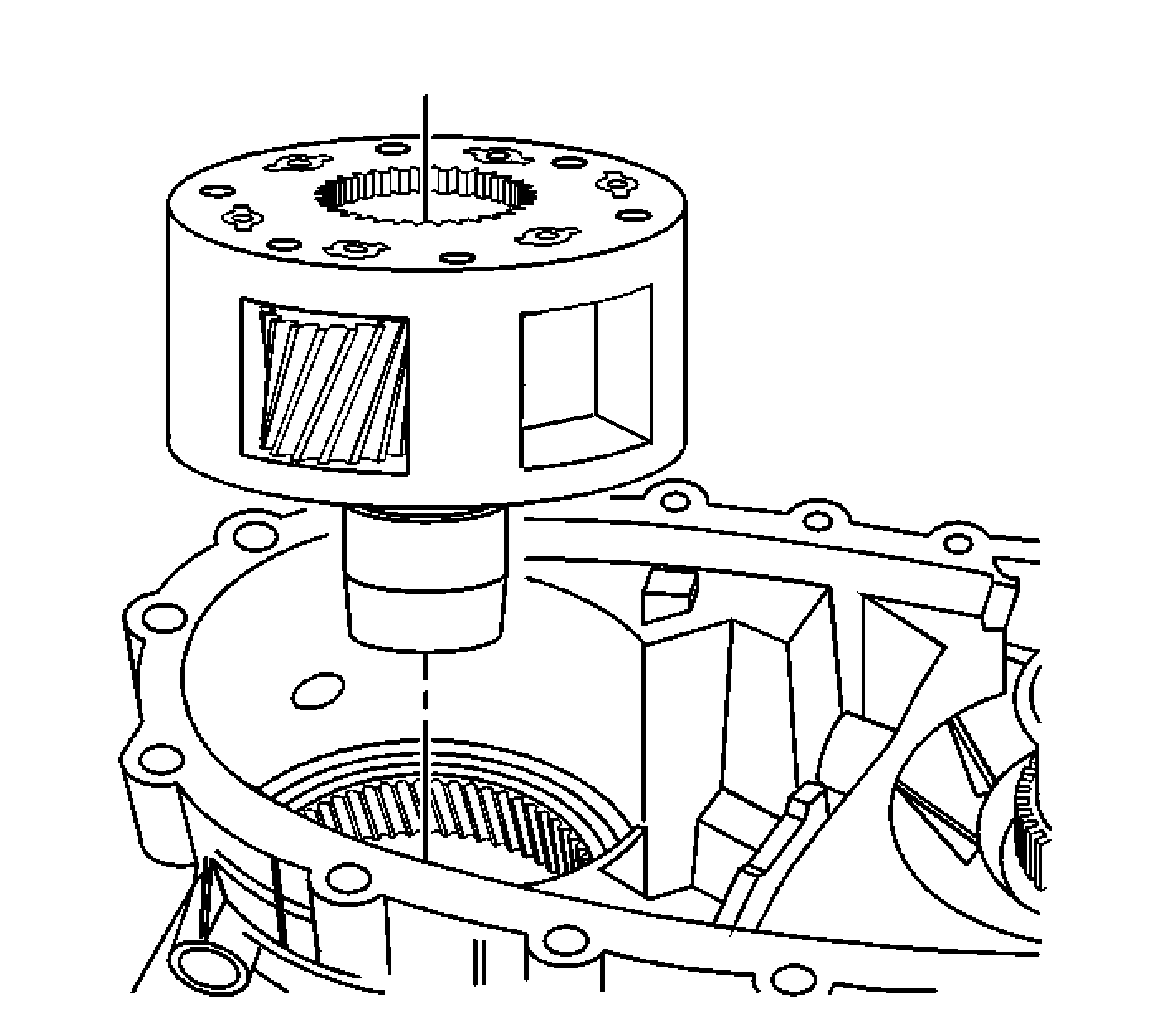
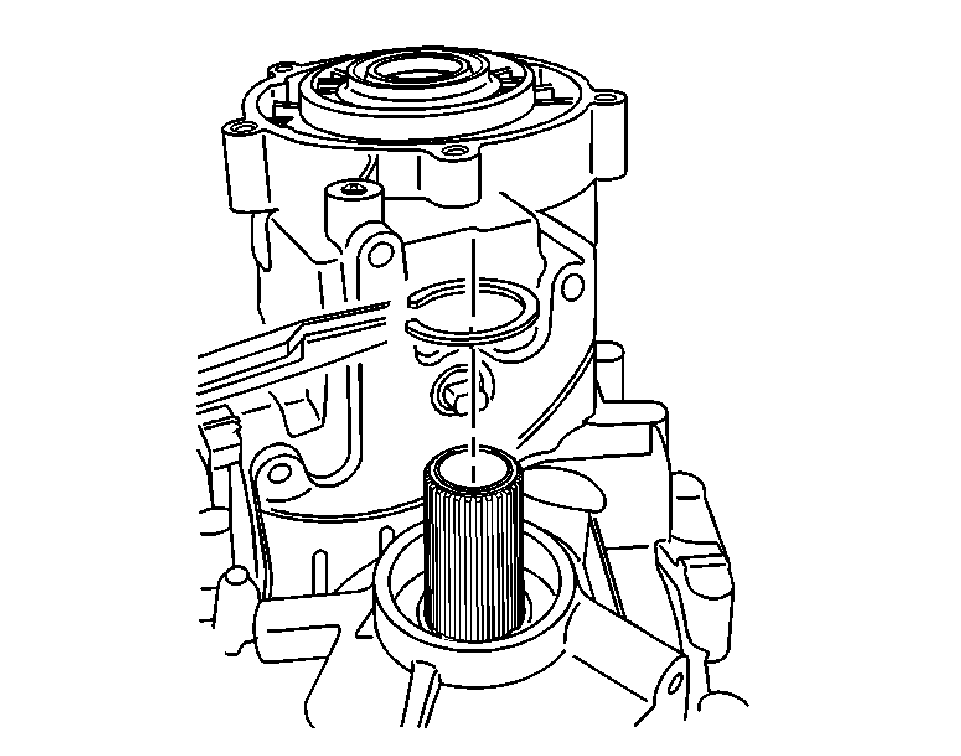
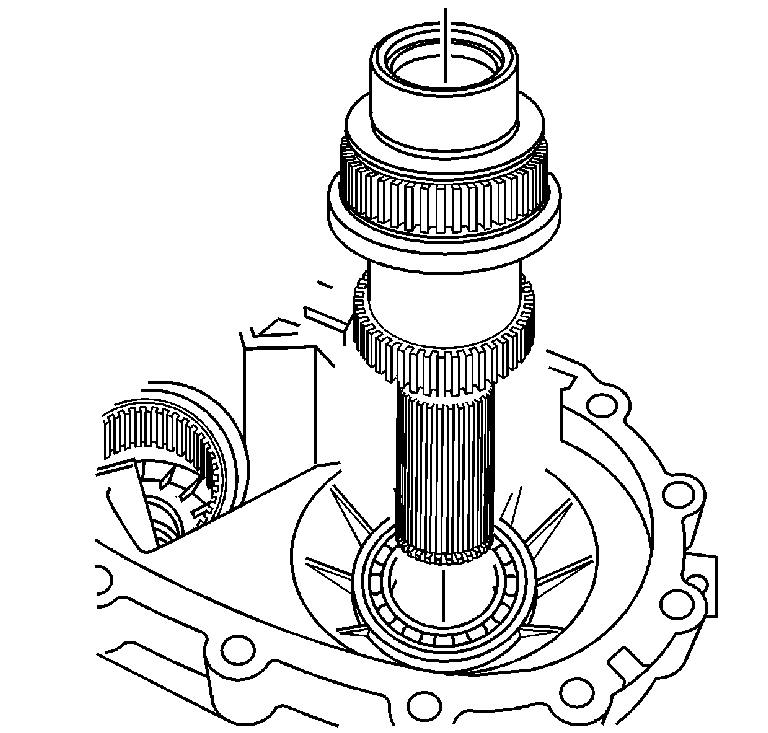

Do not use the speed sensor reluctor wheel again after removal.
